Page 17: I get my Private Pilot Licence, FAA, in 1982 |



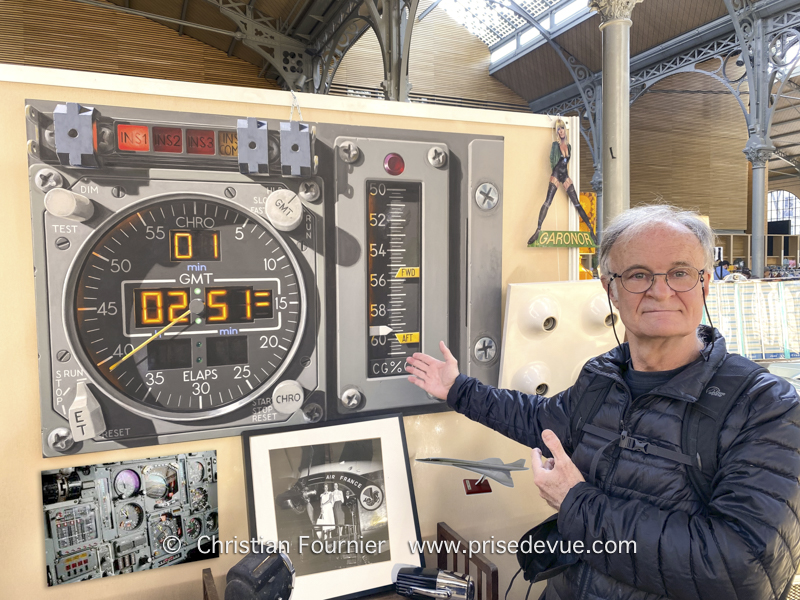
Une partie du tableau de bord du Concorde vue au Salon du vintage 2022


 |

I am frowning only because there is a storm in front of me.
I get my Private Pilot Licence, FAA, in 1982, (validated in France in 1986) in Missouri, to access, among others, the fantastic Alaskan landscapes. Wilderness, here I come. With my camera, of course. I feel ready for "National Geographic".
With the wing above the cockpit, Cessnas are ideal for aerial photography. The 152 is the most popular single engine, two passenger planes in the world. Maximum speed 204 km/h, fix landing gear, fix pitch McCauley propeller, take off maximum weight: 757 kg, flight autonomy 5H, runway take of: 408 m.
Here in the small Cessna 152, during my first cross-country solo flight. Weather is bad. I fly below the clouds. I had secured my Nikon F3 and its fish-eye Nikkor lens 16mm F2.8 on a tripod, solidly tapes with gaffer behind the seats. Remote control triggering with the remote attached to the yoke.
|
Why Missouri? Because they had a one-month internship, all-included, room and board, theoretical and practical classes, administrative papers, and you only left the school once you got your licence.
So they knew how to teach effectively. I met some amazing pedagogues that knew that we learn better when we are relaxed than when we are stressed (the opposite philosophy of my “superiors” at the High School in Arras!).
My instructor had me do a full day of “touch and go” (short take-off and landing circuits) all while talking about other things, then he got out with the excuse of going to find his cigarettes and told me to continue by myself.
I found myself piloting solo, without apprehension, but of course, the instructor “reappeared” by radio contact.
My friend Claude Slowick from the university of Amiens got his licence in France and told me that, in his case, his instructors spent 6 weeks telling him only about all the various dangers of flying at the insurmountable difficulty of your first solo flight. He didn’t sleep at all for 4 days before his first solo flight. Vivent les USA ! |
Le 25 mars 2021 : I got my flying licence a long time ago.
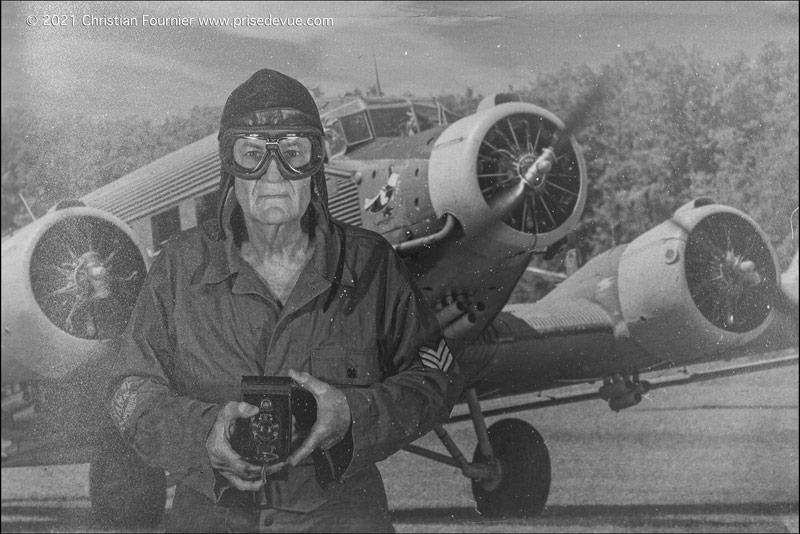

|
 |
 |
 |
 |
 |
 |
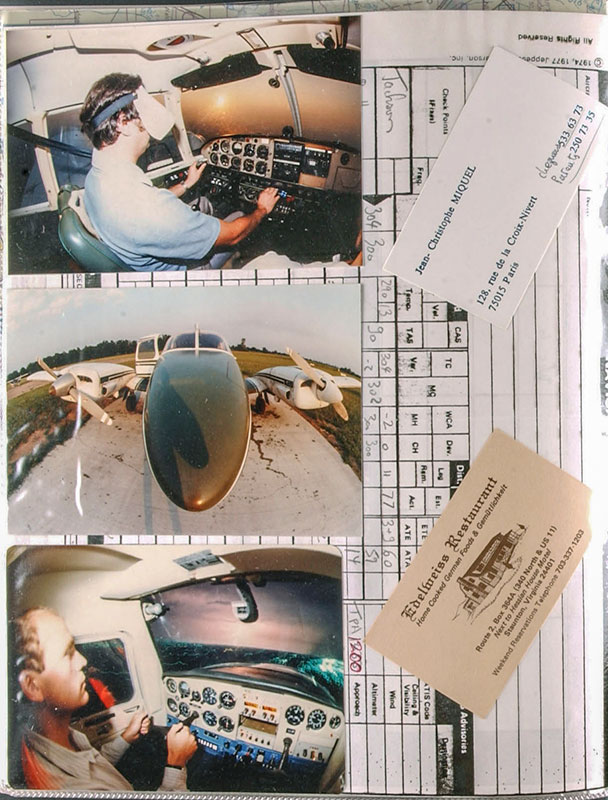 |
 |

At the time, the onboard computer was a slide rule, and Aeronautical charts were big paper maps. We also had a kerosene detector, the tube on the upper left. |

J'ai dû passer un diplôme de radio communication et je l'utilise encore constamment pour épeler en anglais.
I learned radio communication. Example: we spell one letter at a time to avoid this: "two zero two four" = 2024 or 0044 or 0024 or 2044 ?
 |


|
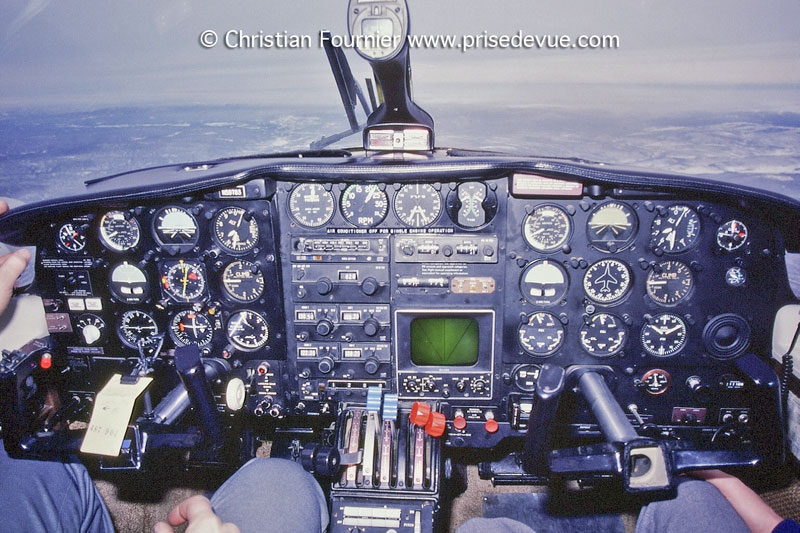
Alaska 1984
INSTRUMENT PANEL
1. Sidewall Circuit Breaker Panel
2. Avionics Power Switch
3. Ammeter, Oil Pressure, Cylinder Head, and Oil
Temperature Gages
4. Fuel Quantity Indicators
5. Fuel Pressure Gage
6. Digital Clock
7. Auxiliary Microphone Switch
8. Flight Instrument Group
9. Airplane Registration Number
10. Encoding Altimeter
11. ADE Bearing Indicator
12. Course Deviation and Glide Slope Indicators
13. Autopilot Control Unit
14. Marker Beacon Indicator Lights and Switches
15. Audio Control Panel
16. NAV/COM Radios
17. Transponder
18. Secondary Altimeter
19. Economy Mixture Indicator
20. Carburetor Air Temperature Gage
21. Suction Gage
22. Flight Hour Recorder
23. ADF Radio
24. Map Compartment
25. Cabin Heat Control
26. Cabin Air Control
27. Cigar Lighter
28. Wing Flap Switch and Position Indicator
29. Mixture Control
30. Propeller Control
31. Rudder Trim Control Wheel and Position Indicator
32. Microphone
33. Cowl Flap Control Lever
34. Fuel Selector Valve Handle
35. Static Pressure Alternate Source Valve
36. Elevator Trim Control Wheel and Position Indicator
37. Throttle (With Friction Lock)
38. Instrument and Radio Dial Lights Dimming Rheostats
39. Carburetor Heat Control
40. Landing Gear Lever and Position Indicator Lights
41. Electrical Switches
42. Parking Brake Handle
43. Circuit Breakers
44. Ignition Switch
45. Master Switch
48. Primer
47. Auxiliary Fuel Pump Switch |
 |
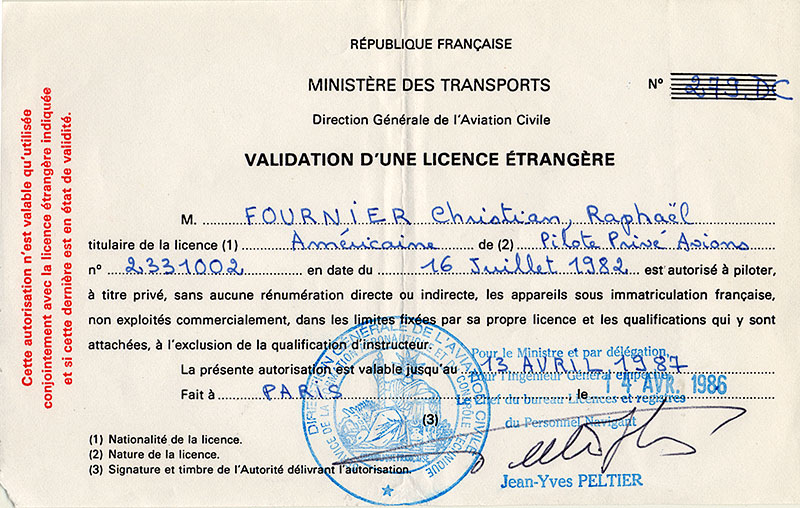
 |

I have done gliding in Colorado.
 |

And hydroplanes everywhere too.


Le saviez-vous?
Une hélice est juste un gros ventilateur au devant de l'avion pour garder le pilote au
|
 |
 |
 |
 |
 |
 |
 |

and ultra light planes too. |
 |
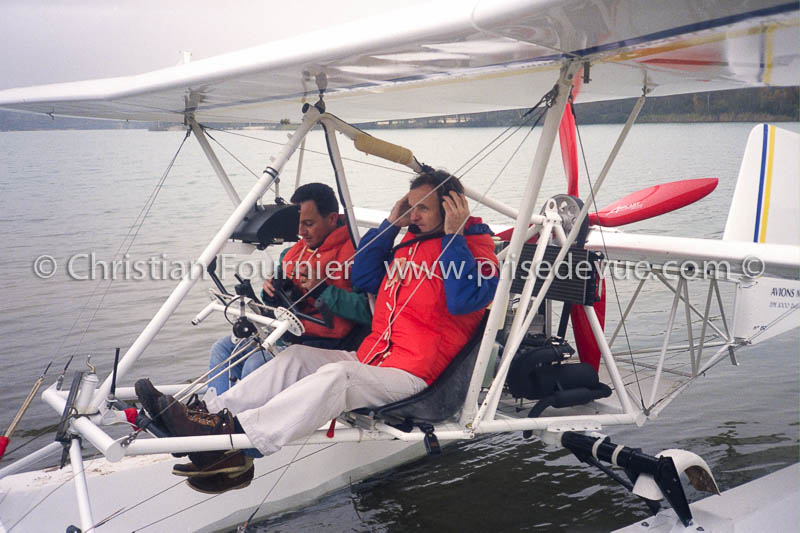 |
 |
 |
 |
 |
 |

|

Flying over my property in Canada in June 1990. |

Training with the plane ULM Mignet, the hydro balerit sea plane, for the botched expedition to Mozambique. I would have been responsible for aerial shots thanks to this great plane stored on the ship’s deck. |
 |
 |
Alain MIGNET to Christian Fournier in 2017…. "Hey, it was with you that I flew in a Hydro Balertir on Cadeuil lake in 1993, right??? Preparing for amazing aventures and hunting underwater treasures on the coast of Mozambique for the great swindlier Eric Surcouf…
How are things with you?
Yes, what good memories!!! We flew over the spectacular floods around Saujon… We didn’t sell any of them!!! Sales really weren’t our strong point!!! I think now, after reflection, that we should have gone to see the municipality of Saujon, they might have been interested, because the rising sea level is a worrying predicament for them! Maybe you should propose your photos to them, you never know.
As for me, the great aeronautical adventure stopped in 2003." |

Floods around Saujon in 1993.
|
In the US, the pre-takeoff checklist (around twenty important points) is printed and taped inside the cockpit and you have to pass your finger over every point to make sure you haven’t forgotten anything. In France, you have to memorize this list and recite the lines while checking everything. In case of panic, I much prefer the American method, because your memory can fail you.
|
Aircraft Preflight
-- Remove tiedown from left wing on arrival -- Take a guess as to wind direction and velocity from windsock. Your guesses will improve with time. -- Open both doors to the aircraft. -- Check time logs, fuel reading, fuel selector, electrical, flaps, trim setting, lights, belts, and interior -- Drain the left wing sump and put cup and oil rag on seat so that it will be available when you get to the other side. You don’t need to carry them all around the aircraft. -- Don’t pour the gasoline in one spot on the tarmac. By giving it a flip downwind it will evaporate in seconds. Better to have an environmental disposal -- Note setting of trim wheel and then trim tab. Discuss the effect that the trim setting could have had on the resulting landing. For a C-172 the trim setting tells a great deal about the aircraft loading during the last landing. For Pipers use identification plate on impinge to set stabilator and trim to neutral. -- Avoid being all ready to start the airplane, only to find that the key cannot be retrieved from the front pocket without getting out of the plane. Put key on floor in front of seat. On dash can fall into defroster. -- Preset seat adjustments and block into position to protect against unexpected seat movement. -- ......
Cockpit Checkouts
Pilots compensate for an aircraft cockpit poor design and layout. Experienced pilots, who have been exposed to more aircraft of all ages, are able to compensate better than the neophyte. Any pilot who first sits in a cockpit should make a mental and physical survey of controls and instruments. The direction things move are better when consistent with your past training. Some older VOR heads are read from the bottom not the top. Same with older heading indicators which are built like, and read like a compass. All switches, knobs, handles, need to be checked for identification, operation, and function. The controls may obstruct at least one or more instruments or knobs. A gauge that is hidden or obscured is a no-fly consideration. It is not unusual to have one side of an instrument face be hidden from one seat or the other. Sit in the cockpit and confirm you know what every instrument, knob, and button is used for. Many Cessna flap switches operate differently from year to model year.
..........
Checklists The use of checklists prevents accidents. The most likely misuse of a checklist is when an interruptions occurs in mid-use. With two people the challenge-response process is best. Professionals use checklists.
|


The Bernoulli theorem, which was established in 1738 by Daniel Bernoulli, states that the speed of a fluid (air, in this case) determines the amount of pressure that a fluid can exert. It explains the lift, one of the four forces of flight and sailing.
Moving air is separated in two flows when encountering an air foil (wing or sail). The top part has a longer path to travel. It reduces it's speed and creates a low pressure.

I still go to aerial meet-ups..
|
 |
I took an aerial photo of the Château d’Esclimont for the wedding of Nicky Byrne and Georgina Ahern on Wednesday August 13, 2003.

You can really make out the tent set up for the reception. |

The church.
|
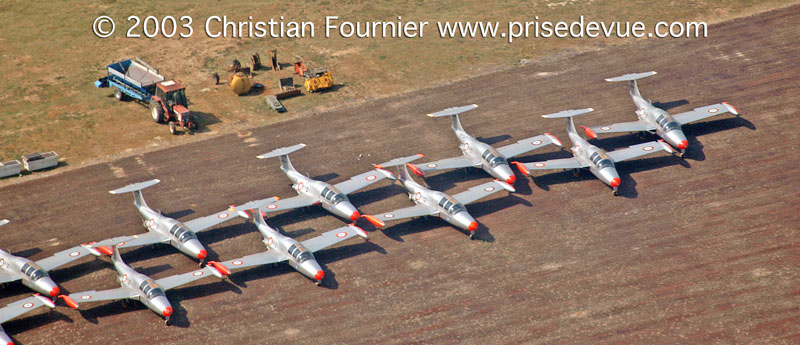
I use the opportunity to fly over the aerial base in the area. |
 |

In 2013 and 2015, I did photo reports at the Salon Aéronautique in le Bourget.
 |
June 15 2015 : François Hollande at the Salon aéronautique du Bourget.
 |

AIRBUS A380 |
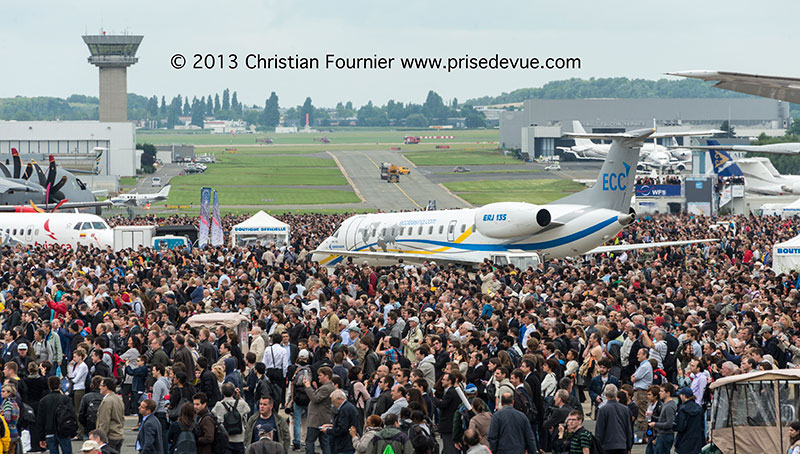


Matthew McConaughey nous a salué

17-20 juin 2019 : Salon Paris Air show = SIAE = Salon International de l'Aviation et l'Espace

Le président de la République, Emmanuel Macron, s'est posé sur le tarmac plus tôt dans la matinée, à bord d'un A400M. A 13h45, le chef des armées fait une entrée remarquée. Avec Florence Parly ministre des armées, Eric Trappier, PDG de Dassault, etc ...
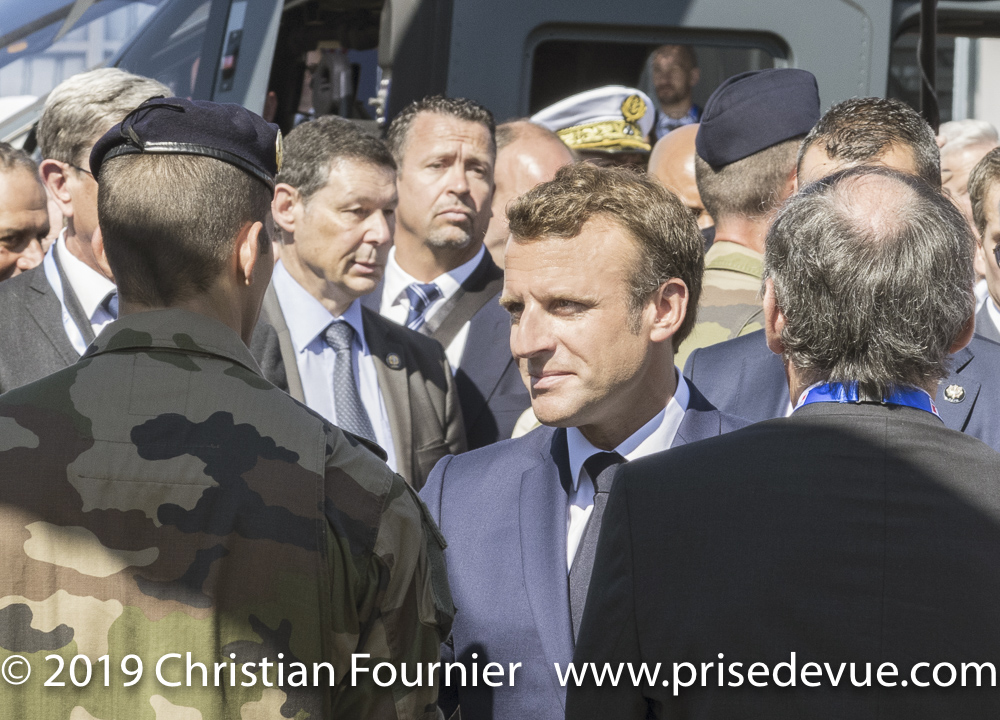
|
 |
 |
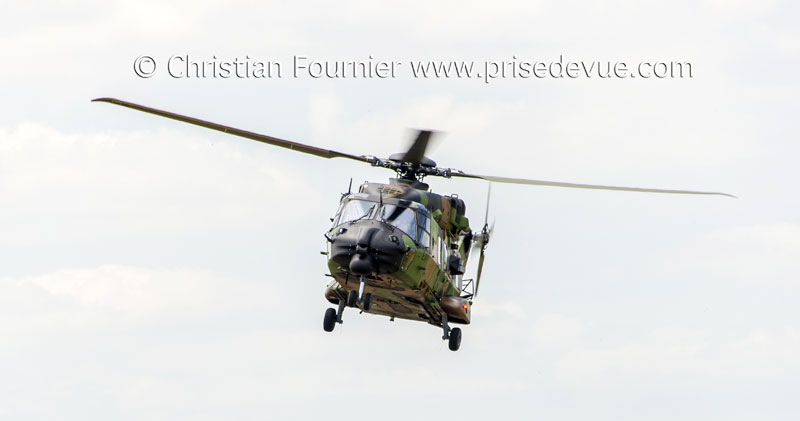 |

June 17, 2017 : Aerial meeting of the Circle of Flying Machines in Compiègne-Margny, themed 1914-1939.
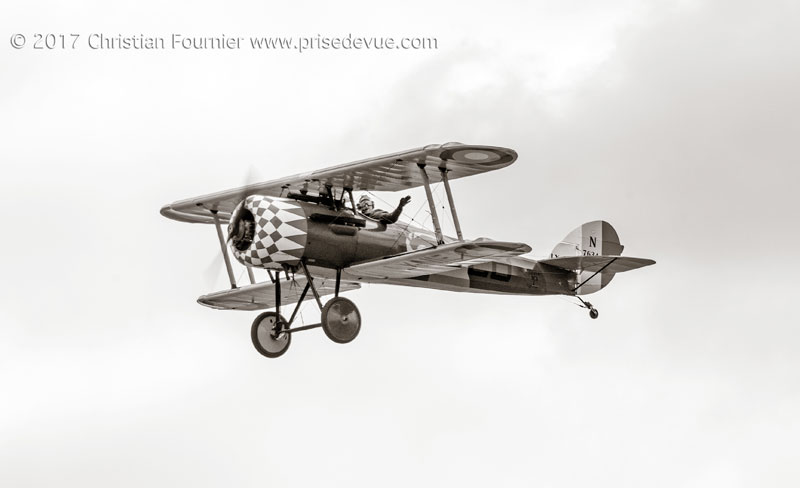 |

|

|
07-08 juin 2014 : 70ème Anniversaire du D-Day en Normandie.
 |

 |
 |
October 18, 2017 : Photo Reporting for Cathay Pacific at the Charles De Gaulle airport.
 |


|

One of the plane’s two baggage compartments. |

Thank you to the pilot Benoît Auger. |
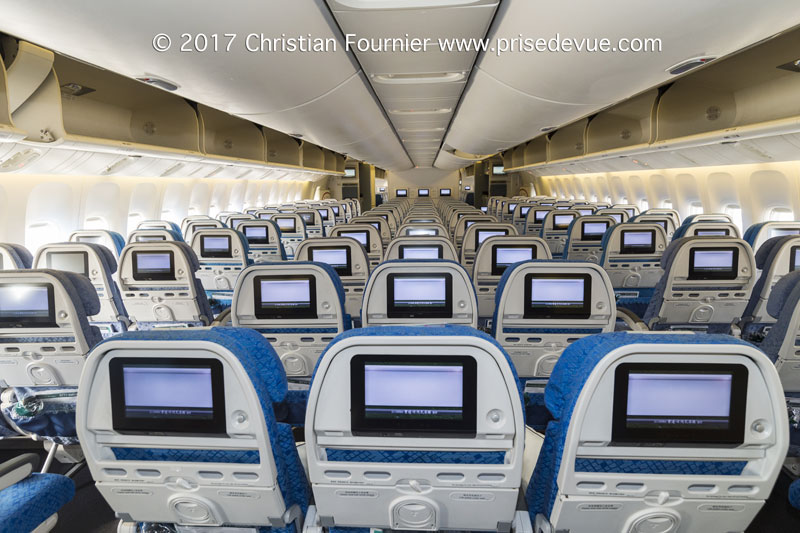 |
Le Boeing 777 ou B777, souvent surnommé triple sept dans le milieu aérien, est un avion de ligne gros porteur, long courrier et biréacteur construit par la société Boeing. Entré en service en 1995, il est le plus grand biréacteur au monde, avec une capacité de 300 à 550 passagers et une distance franchissable variant de 9 695 à 17 370 km selon les modèles. Il est reconnaissable par le grand diamètre de ses turboréacteurs GE90, ses six roues sur chaque train d'atterrissage principal et son fuselage de section circulaire se terminant en forme de lame.
Face à la montée en puissance de la concurrence durant les années 1980, Boeing innova pour développer cet appareil en établissant un partenariat avec huit grandes compagnies aériennes et en concevant intégralement l'avion par ordinateur. L'avionneur introduisit à cette occasion des techniques de pointe : une voilure supercritique, des commandes de vol électriques, et un pilotage assisté par ordinateur. Boeing compléta ainsi sa gamme en offrant une capacité intermédiaire entre le 767 et le 747, ce qui permettait le remplacement de modèles antérieurs de gros-porteurs.
En janvier 2015, 1 268 appareils avaient été livrés, faisant de cet avion un succès commercial pour son constructeur. En 2013, il devient le gros porteur le plus vendu dans l'histoire de l'aviation.
Le 777 est connu pour être un avion très sûr. Malgré le nombre d'avions en service, on ne déplore que quatre accidents majeurs. Deux ne mettent pas en cause l'avion, et les deux autres proviennent de causes encore indéterminées.
|
I am only pretending here.

 |
Le 15 sept 2018 : Au Musée Aéronautique et Spatial Safran.

Le mirage III V. Merci à Frédérique Gorky pour cette photo de moi.
Au début des années 1960, à la demande du ministère de la Défense français, les constructeurs aéronautiques Dassault Aviation et Sud-Aviation réalisèrent des expérimentations d'avions à décollage et atterrissage verticaux (ADAV) devant aboutir à un avion de combat Le Mirage III V.
Deux prototypes furent réalisés : le Mirage III V01, qui fit son premier vol stationnaire le 12 février 1965), et le Mirage III V02, qui vola pour la première fois le 22 juin 1966. La première transition du vol stationnaire au vol horizontal eut lieu le 24 mars 1966. Le 12 septembre, le V02 atteignit la vitesse de Mach 2 en vol horizontal. Avec ses 2 124 km/h, le Mirage III V reste encore à ce jour (2013), l'ADAV le plus rapide du monde et le seul à avoir atteint Mach 2. Le Rafale a une vitesse maximale de 1912 km/h |

|
July 14, 2017 : The Parade on Les Champs Elysées.
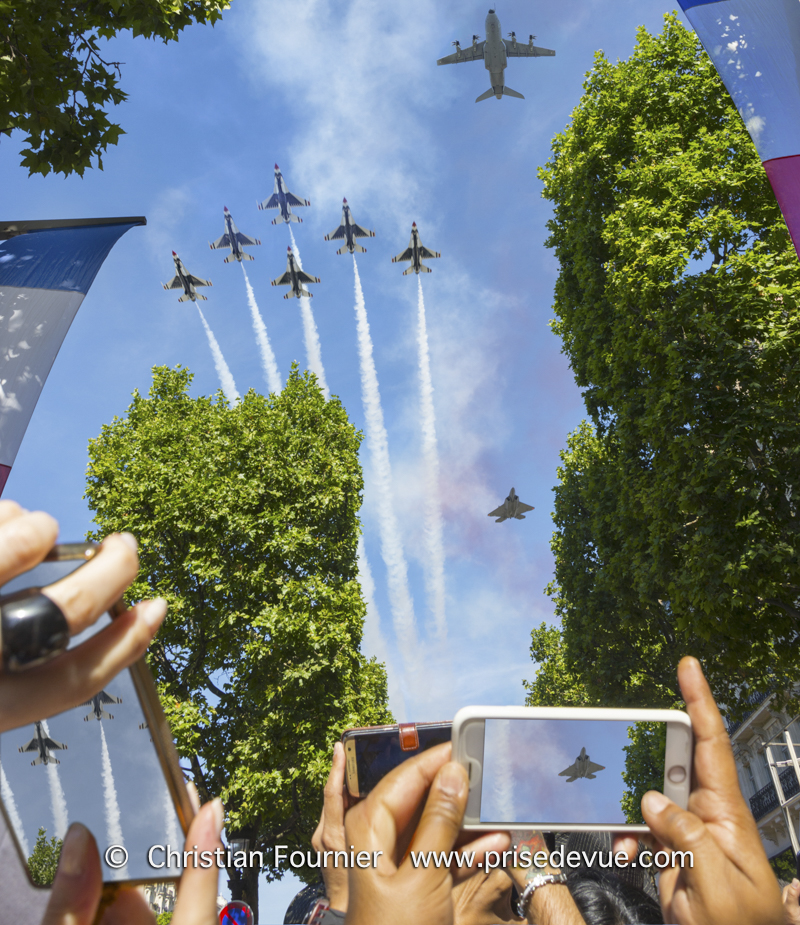
|
19 mai 2018 : La Fête Aérienne 2018 « le Temps Des Hélices » à La Ferté Allais

Photo non retouchée, mais perspective délirante dûe aux lois de la physique!
Les pionners
– Morane type H (F-AZMS)
– Blériot XI² (F-AZPG)
– Déperdussin T (F-PDEP) |
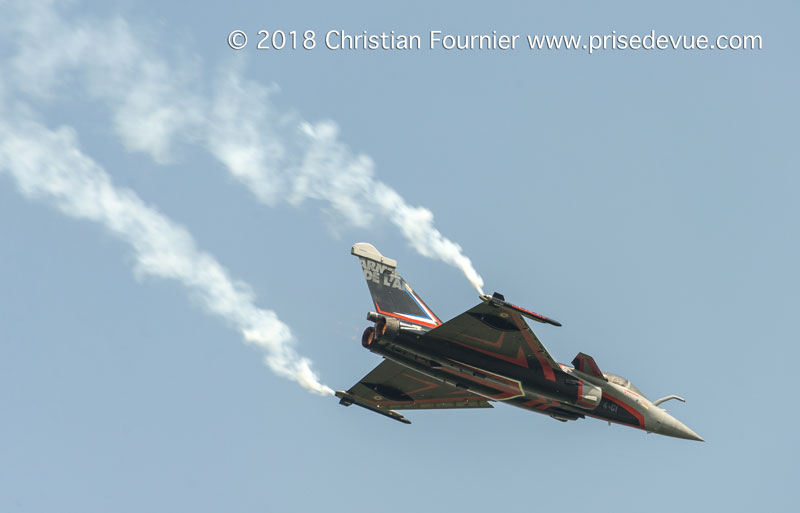
Dassault Rafale (Rafale Solo Display French Air Force)
|

1920 Adrienne BOLLAND
– Caudron GIII (F-AZMB)
|

Tora Tora Tora : l'attaque de Pearl Harbour
– North American T-6G X 7 (F-AZCV, F-AZBE, F-AZVN, F-AZBQ, F-HLEA, F-AZTL, F-AZGS)
– North American AT-6C (F-AZQR)
– North American SNJ-5F (F-AZRB)
– AT-6M modifié « Zero » (F-AZZM)
– Naval Aircraft Factory N3N-3 (F-AZNF)
– Ryan PT-22A Recruit (N53018)
– Boeing-Stearman PT-13 D Kaydet (F-AZJR)
– Solo P-40N-5-CU Warhawk (F-AZKU)
|

Wingwalker Danielle sur Pink Lady @aviationWingwalkerDanielle

Il ne manque que le bruit !
|

6 Dassault Rafale Marine X4 (jets) et un Chance Vought F4U-5NL Corsair (F-AZEG), hélice
 |
28 Août 2021 : La Ferté Alais.










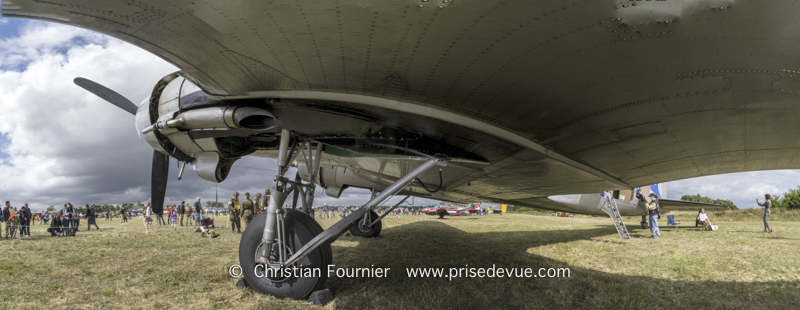




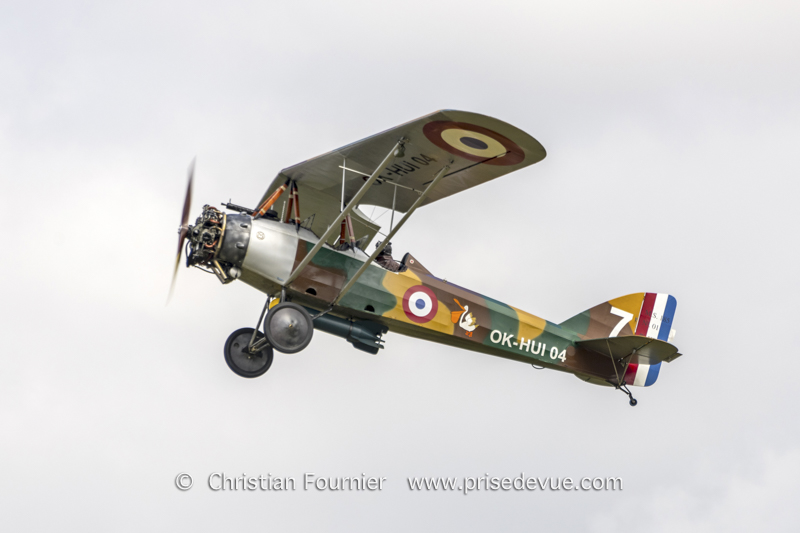


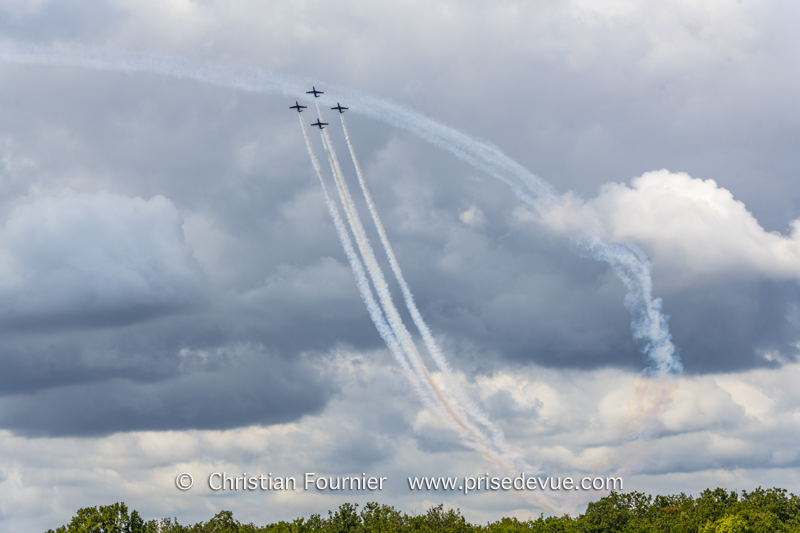













 |
23 juin 2019 : La Patrouille de France survole la place de La Concorde transformée en immense parc des sports pour fêter les JO de Paris 2024.
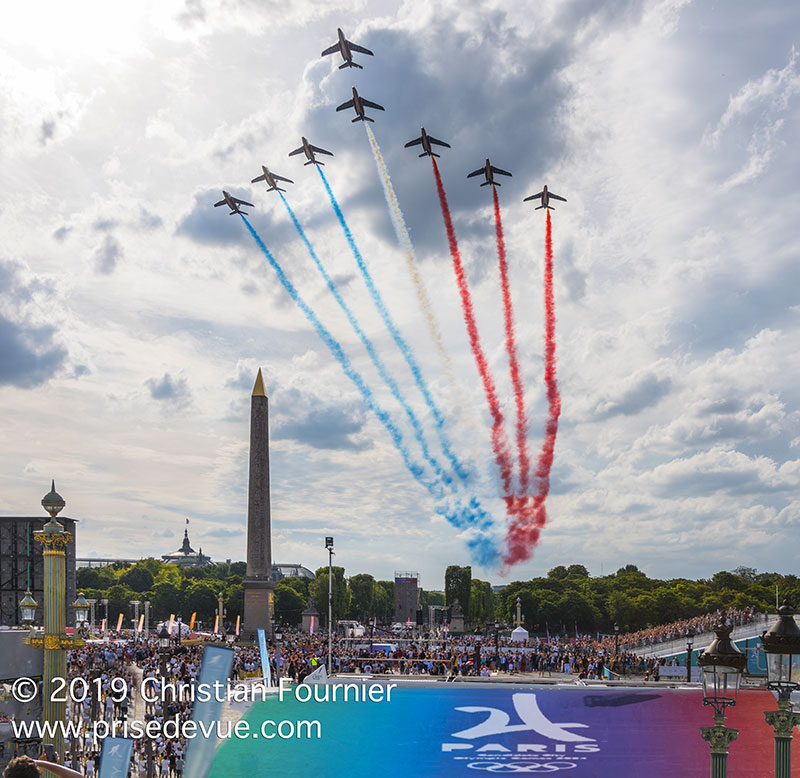
17-20 juin 2019 : Salon Paris Air show = SIAE = Salon International de l'Aviation et l'Espace



|
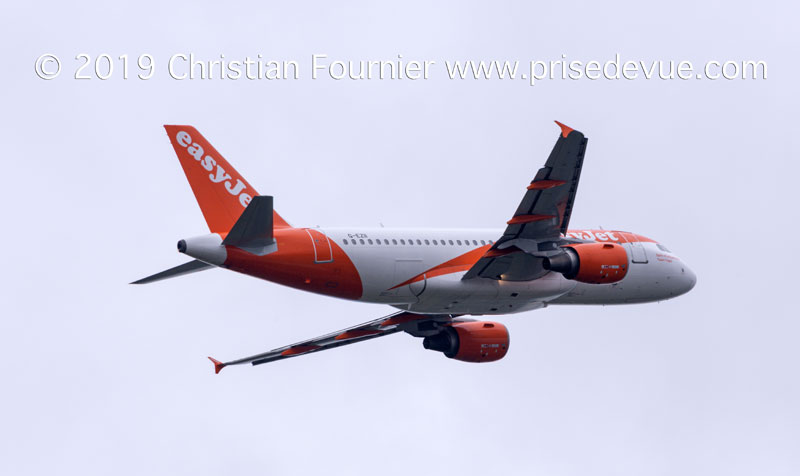

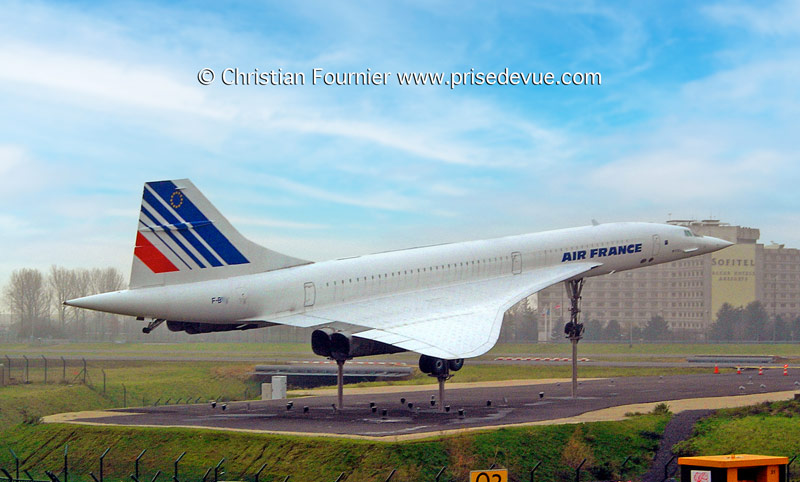
Le Concorde à Roissy Charles-de-Gaulle
Le dernier exemplaire de Concorde appartenant à Air France, le «Fox Fox», est désormais mis en exposition sur la plate-forme de l'aéroport de Roissy-Charles de Gaulle. L'appareil a fait ce lundi son dernier roulage de 3 500 mètres entre les hangars d'Air France Industries et son lieu d'exposition à Roissypôle.

Le 07 septembre 2019 :
La clôture du Victory Show avec une démontration de parachutisme par La Royal Air Force.





Flt Lt Mikaela Harrison : Alumna ready to lead the RAF Falcons Parachute Display Team for 2019 season
Alumna and Royal Air Force (RAF) Officer, Flight Lieutenant (Flt Lt) Mikaela Harrison, is about to commence her first display season as Officer Commanding the RAF Falcons Parachute Display Team
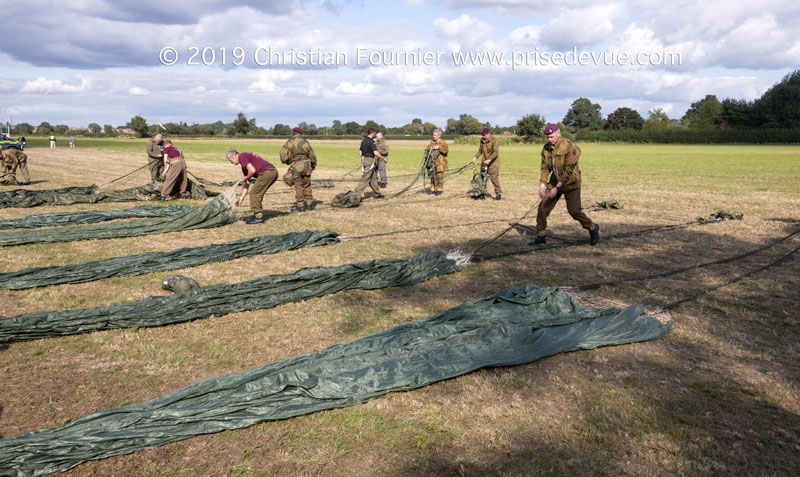


5-7 September 2019: The Victory Day in Leicestershire, England.
5-7 septembre 2019 : Le jour de la victoire dans le Leicestershire, en Angleterre.





Le défilé aérien militaire du 14 juillet 2020 à Paris, interdit au public.???
The military air parade of July 14, 2020 in Paris, prohibited to the public. ???


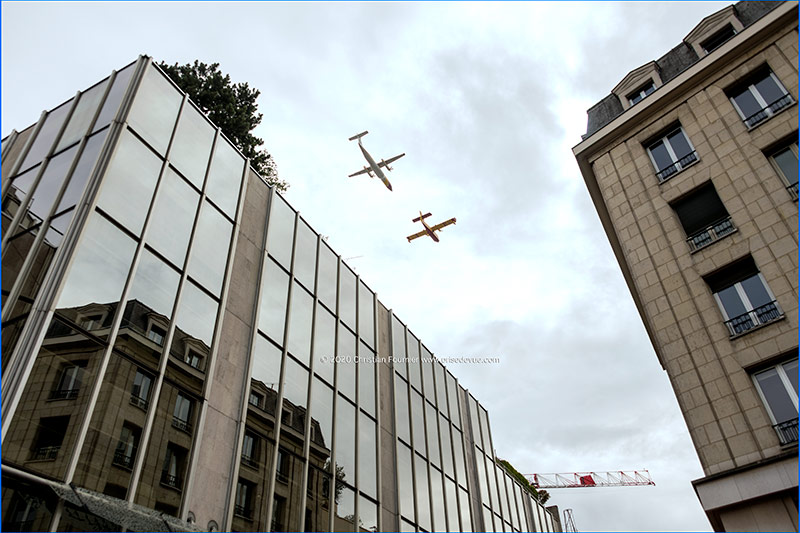



|
Le Salon International de l'Aéronautique et de l'Espace (SIAE) de Paris le 23 juin 2023


J'ai pris un cours d'apesanteur !


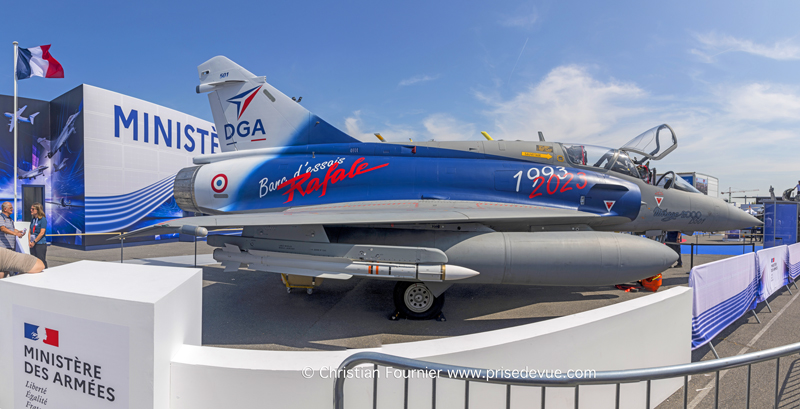
Le Rafale, Ambassadeur de l'AAE



Après 27 ans de carrière et 117 lancements, la fusée européenne tire sa révérence dans un climat morose pour l'Europe spatiale, en attendant la relève Ariane 6, au mieux fin 2023.

Les "Phénix" font le grand saut pour le Bourget


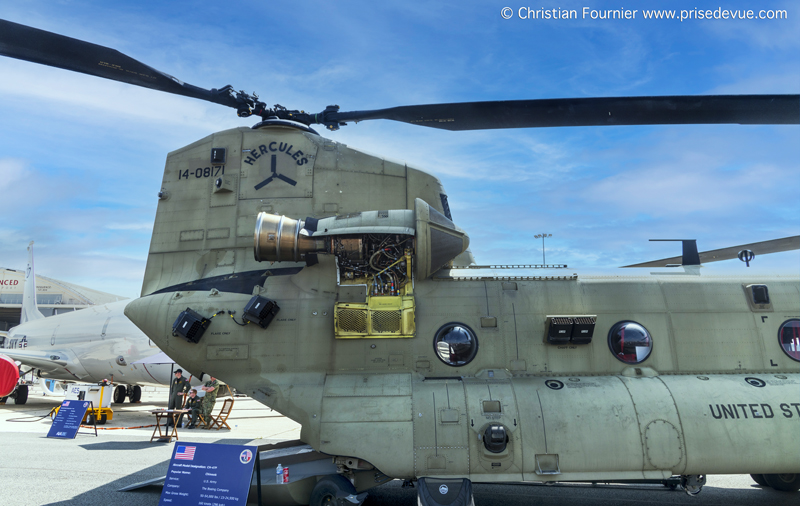


Au salon du Bourget, le groupe ADP et la start-up allemande Volocopter ont confirmé leur calendrier : démarrer un service expérimental de taxis volants en Île-de-France à l'occasion des Jeux olympiques et paralympiques de Paris en 2024.


Boeing Stearman Wing Walker
[Fille du Ciel] Hier au Salon du Bourget, Emiliano, pilote et Lydia, "Wing Walker", marcheuse d'ailes, nous ont montré un show impressionnant d'acrobaties à bord de ce Boeing Stearman. Vous pouvez suivre leurs aventures sur 46 Aviation SA.

Yes, beaucoup de monde, en dépit de la chaleur


Le nez du Rafale

L'avion est parti sans eux !





Airbus A380.
L'Airbus A380 est un avion de ligne civil très gros-porteur long-courrier quadriréacteur à double pont, produit par Airbus de 2004 à 2021. Ses éléments sont fabriqués et assemblés dans différents pays européens, principalement en France, en Allemagne, en Espagne et au Royaume-Uni. L'assemblage final est réalisé sur le site de Toulouse, en France.
L'A380 est, en 2023, le plus gros avion civil de transport de passagers en service et le quatrième plus gros avion de l'histoire de l'aéronautique. Il est doté de quatre turboréacteurs Rolls-Royce Trent 900 ou Engine Alliance GP7200 d'une consommation de 3 L/100 km/passager. Le pont supérieur de l'A380 s'étend sur toute la longueur du fuselage, ce qui donne à la cabine une surface de plancher beaucoup plus importante que celle de son concurrent direct, le Boeing 747-400.

Le Rafale

Le Rafale Solo Display, Ambassadeur de l'AAE

Un équipage de l’A400M Tactical Display est présent au Salon international de l’aéronautique et de l’espace. L’occasion de voir leur démonstration dans le ciel du Bourget. C'est l'ancien Transal de ma jeunesse !


Airbus A350
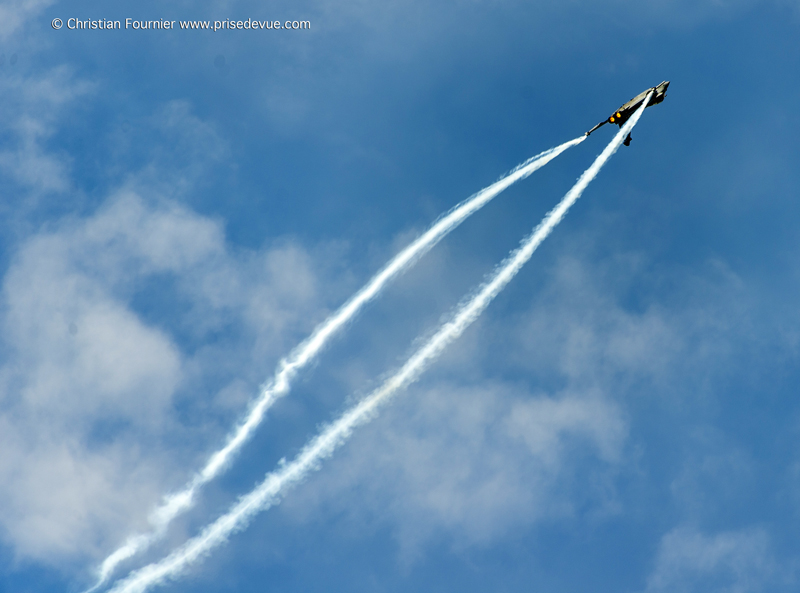
Le Rafale Solo Display, Ambassadeur de l'AAE

La patrouille de France
 |

Frédérique et moi avons fait du planeur à Las Vegas en 2013

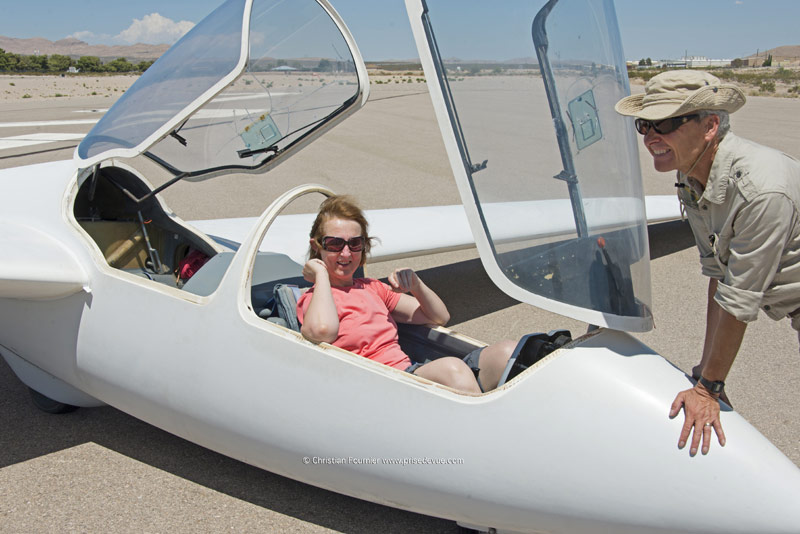
 |


|
 |
 |
 |
08 Mai 2018 : Commémorations du 8 mai 1945 au Château du Taillis
 |
Thank you to Hartmut and Carlos for the paragliding. It’s not aviation, but there are similarities.

440-metre-high cliff, one of the tallest in the world, in Madeira.
 |
09 Mai 2018 : Char à voile sur la côte d'Opale avec Frédérique Gorsky



|
In a helicopter to photograph the first cruise of the ship Le Piana, from Split, Croatia, to Trieste, Italy, before taking up its usual itinerary in December 2011.
Le Piana is a mixed ship (ferry / ro-ro) which now goes between Marseille and Bastia every day for La Méridionale company. It is one of the biggest ships in the La Méridionale fleet in terms of freight (garages for 200 cars, 2.5km of vehicles) and the second biggest, after the Girolata, in terms of passenger capacity (700 people). I took this photo, like a selfie, with my outstretched arm holding my Nikon D4 using the Nikkor 16mm F2.8 fisheye lens. With the strong wind at the helicopter vibrations, this was no easy feat.
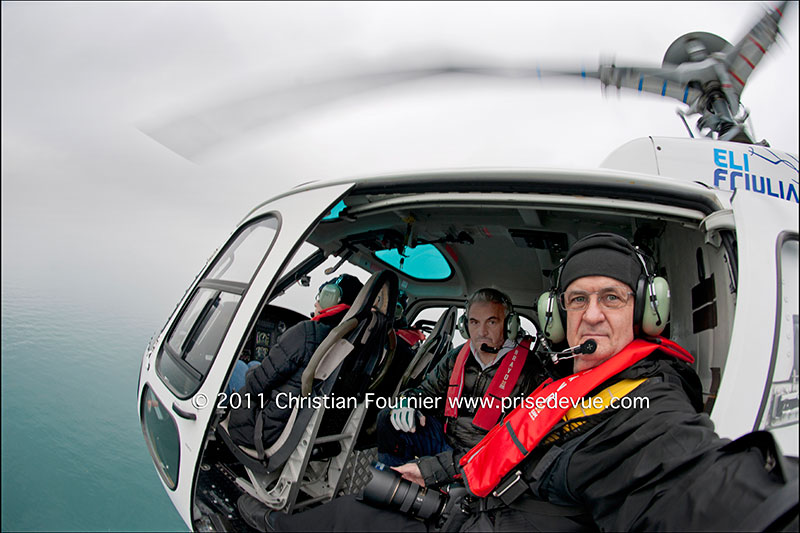
Alexandra Penkina : "Too lucky."
Christian Fournier : "The more I work, the luckier I am!”
|
Video : A drone flies over la Place Vendôme.
|

I shot this photo from the 56th floor of La Tour Montparnasse
during a clear October night.
Prises de vue en accéléré du coucher de soleil vu de la Tour Montparnasse.
|


Août 2023 : Drone à La Hottée du Diable par Frédérique Gorsky et Christian Fournier. Un chaos rocheux de 17 hectares, situé sur une butte sableuse à la limite nord de la commune de Coincy (Aisne) dont la formation sédimentaire date de l'éocène. Il est géré depuis 1995 par le Conservatoire d'espaces naturels de Picardie et fait partie d'une zone naturelle d'intérêt écologique, faunistique et floristique localisée administrativement sur les communes de Coincy, de Villeneuve-sur-Fère, de Saponay et de Bruyères-sur-Fère, d'une superficie de 295 hectares à une altitude comprise entre 117 et 185 mètres.

Août 2023 : Drone au château de Fère-en-Tardenois par Frédérique Gorsky et Christian Fournier. C'est un ancien château fort, bâti à partir du début du XIIIe siècle, dont les ruines se dressent sur la commune de Fère-en-Tardenois dans le département de l'Aisne en région Hauts-de-France.


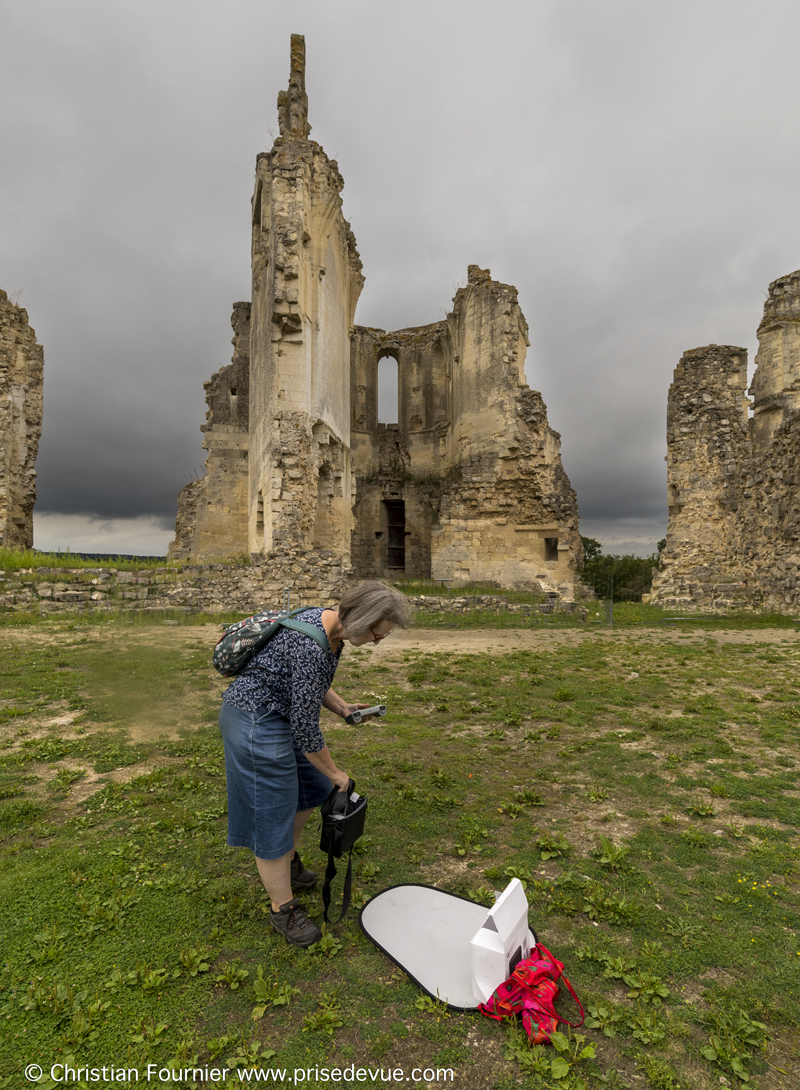


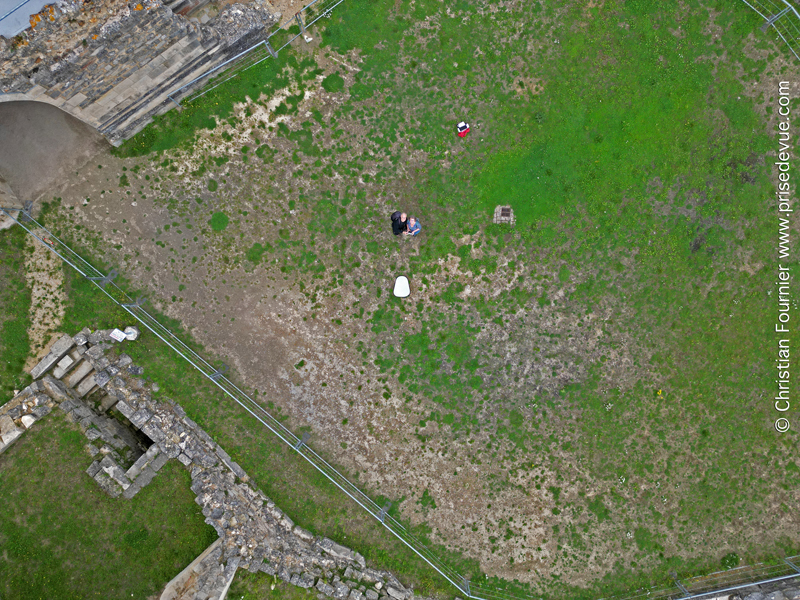



 |
Le 12 août 2023 : Frédo et moi nous entraînons pour l'ISS.
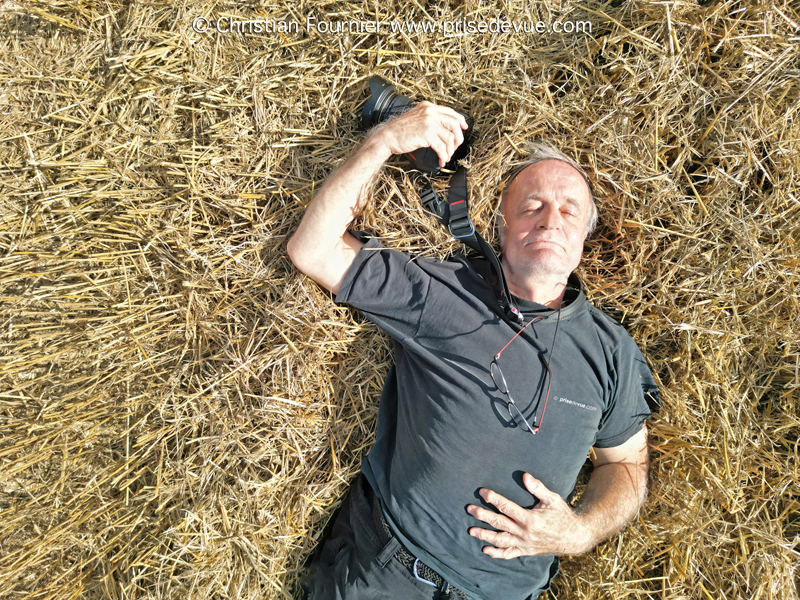








|
Drone à Soissons, pont de Cuffie, le 25 fev 2024 avec Frédérique Gorsky





|


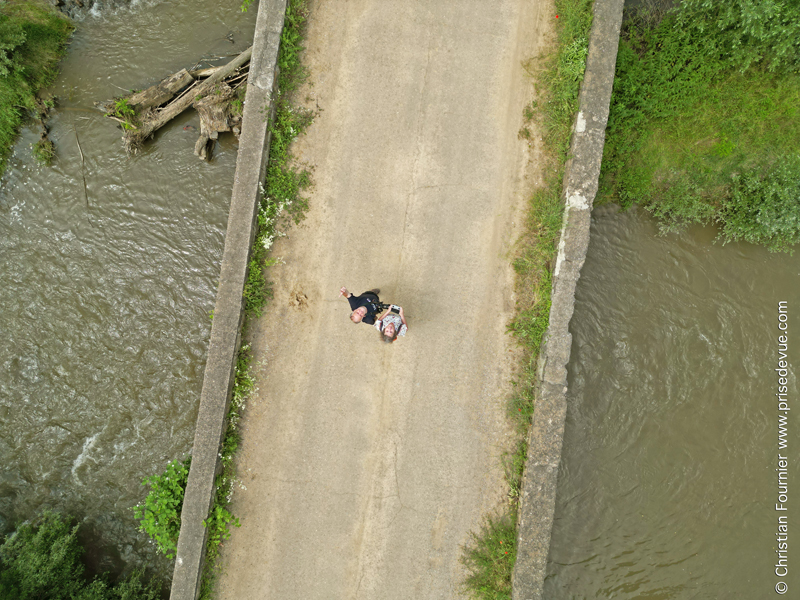


 |


|
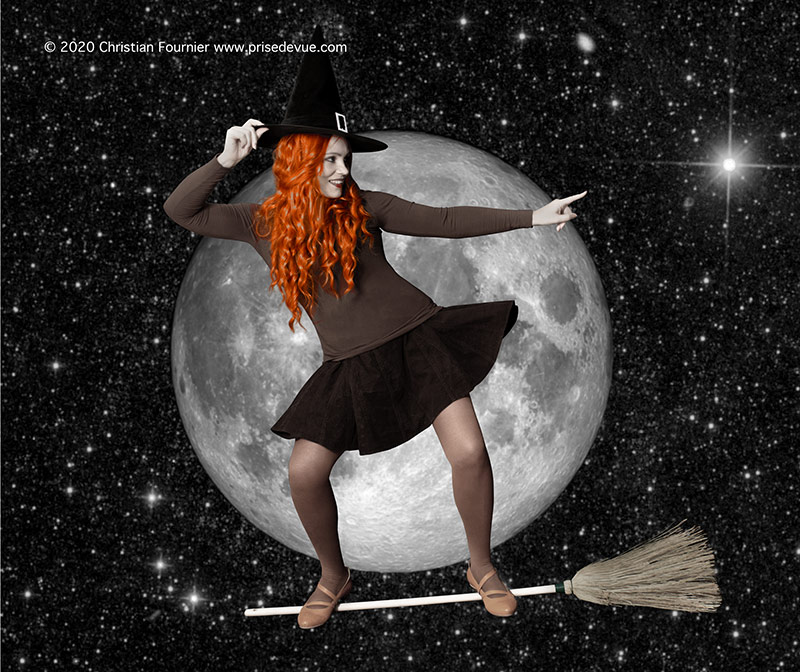
 |

Il n'y a qu'en Tchéquie où l'on peut amener sur un aérodrome
des jolies filles et les photographier nues.

Heureusement, j'ai fait beaucoup d'aviation dans ma jeunesse !











Effectivement, il y a du danger.







CIEL ET ESPACE |
J'achète un drone DJI
- mini 3 pro en 2023. Je prends des cours.



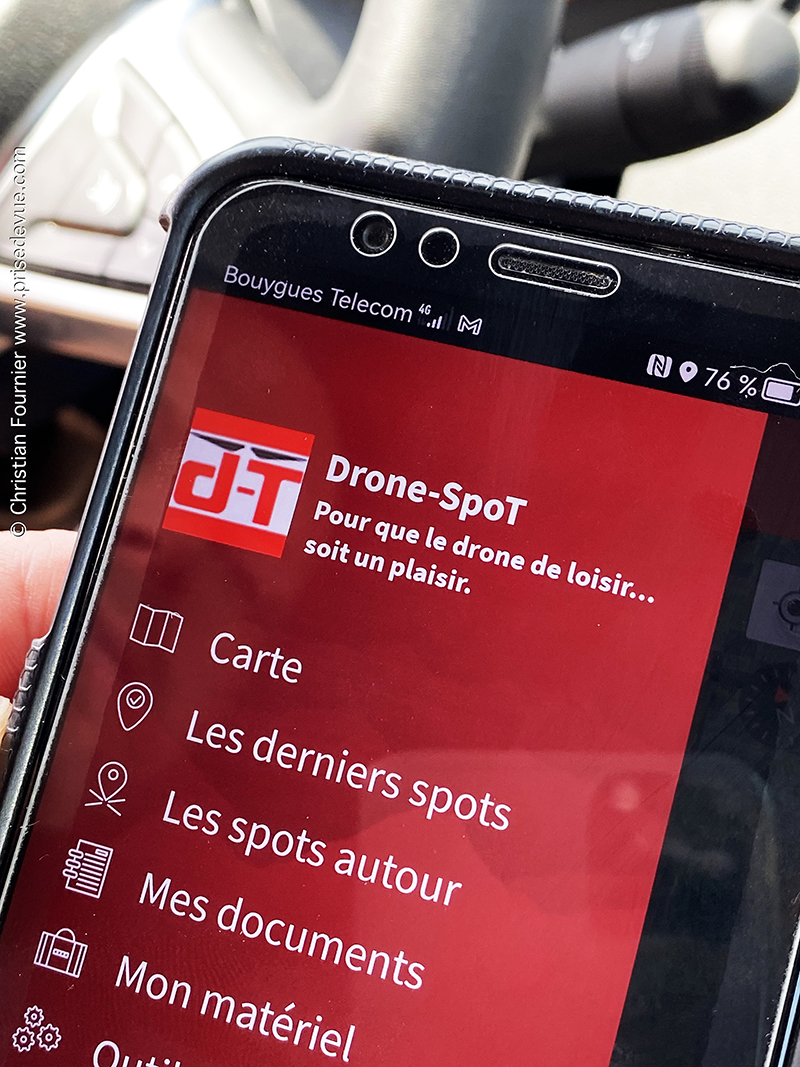
Et Frédérique et moi s'en servons lors
de nos vacances en Bulgarie en juin 2023

Notre drone DJI
- mini 3 pro.




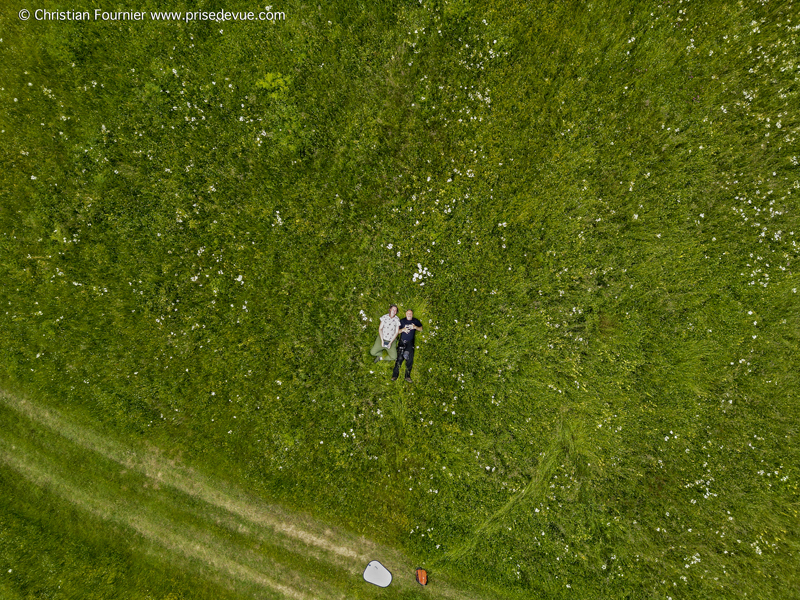
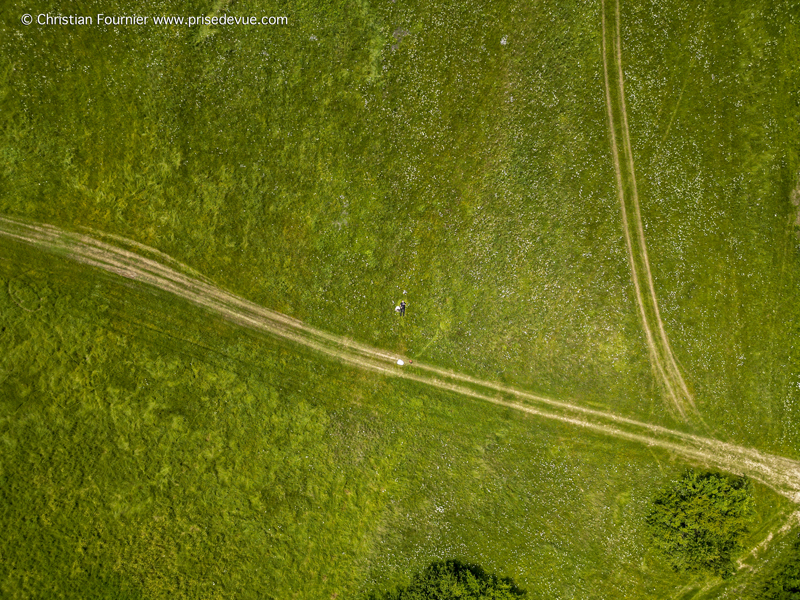
Max 100 mètres
d'altitude







|
September 27th, 2015: the Blood Moon.
Photos and timelapse : Christian Fournier. Location : the Premises of the AFA (Association Française d'Astronomie) in Parc Montsouris.
During the night of the 27th to the 28th of September 2015 there was an exceptional lunar eclipse. The moon, particularly close to the Earth would take on a red hue and would disappear for minutes. Total and partial lunar eclipses can seem less spectacular because they are less frequent than total solar eclipses. Nevertheless that which occurred the night of the 28th of September was definitely worth a few minutes of gazing into the sky. Actually, it was a “Supermoon”. The moon, whose elliptical orbit brought it very close to the Earth (363,104 km to be precise), appeared to be larger in the sky. It was the alignment with the Sun which gave it this particular scarlet hue. So it was named “Blood Moon”. It is the conjunction of these two astronomical phenomena which makes the event so exceptional. This kind of eclipse happens very rarely and the next one to be visible from France will take place in 2033.
I used two Nikon boddies D600. One with a Nikkor 80-200mm F2.8
for the time-lapse and the other with a Sigma 500mm for the
close-ups. Both on tripods of course, equipped with Manfrotto
micrometric heads. Antivibration, mirror up, noise reduction,
remote triggering to avoid shake, drastic exposure bracketing,
raw format, lens correction with Lightroom, moon always in the
centre of the frame for better lens definition. The sky was
very clear and had been for the past two days without a single
cloud (rather rare for Paris), the air was crisp, the
visibility very sharp (very rare in Paris). During the day, we
had a special and unique carless day which reduces pollution (I
am not sure it contributed to this exceptional visibility
though). We were in a wooded small recreational small park in
Paris, with not to much light pollution (for Paris). Not many
stars were visible tough.
My photo is now on display at NASA, thanks to my longtime friend (1987) Shannon Templeton, who works on the TESS program, Transiting Exoplanet Survey Satellite, which searches for exoplanets. In February 2019, the satellite TESS, the new exoplanet hunter of NASA, discovered the exoplanet GJ 357b.

|
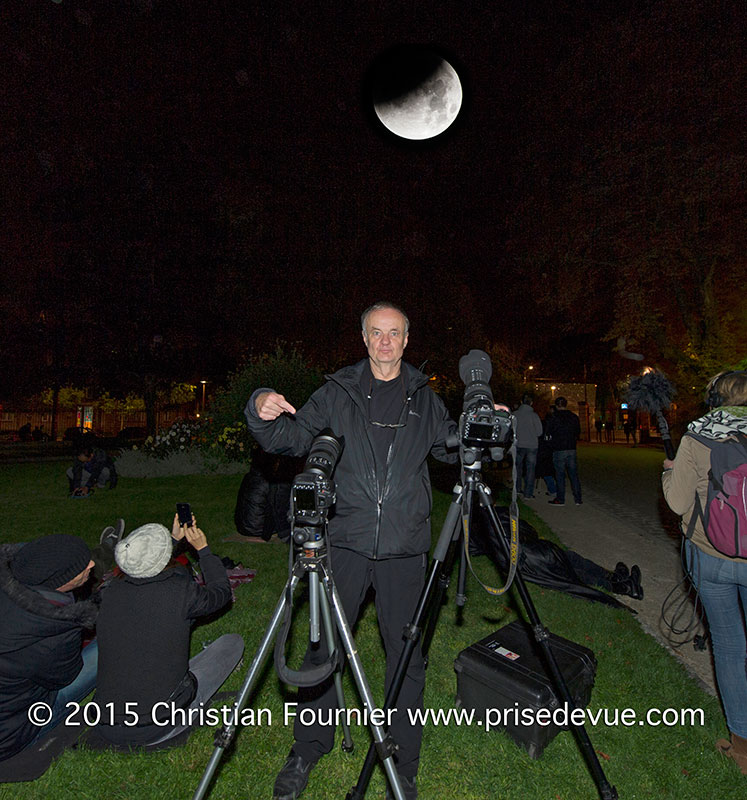
|
14 juillet 2019 : Éclipse partielle de la Lune, vue de Paris, dans ma cour, à Port Royal.
- 21h30 : la Lune se lève
- 22h00 : la Lune entre dans l'ombre de la Terre et commence à être grignotée
- 23h30 : la Lune est grignotée au maximum. 65 % de son disque est dans l'ombre de la terre
- 01H00 le matin : la Lune sort de l'ombre de la Terre. L'éclipse est finie.
Tout s’est déroulé comme prévu, comme toujours grâce aux astronomes. Pourtant la plupart des gens préfèrent l’astrologie à l’astronomie. Pourtant il est clair que l'astrologie et les horoscopes sont du baratin. Il y a une rubrique "horoscope" journalière dans tous les journaux du monde, mais jamais une rubrique journalière sur l'astronomie.
-"Ce n'est pas un signe de bonne santé mentale que d'être bien adapté à une société malade" : Jiddu Krishnamurti
Partial eclipse of the Moon, seen from Paris, in my courtyard, in Port Royal, on July 16, 2019.
- 9:30 pm: the Moon rises
- 22:00: the Moon enters the shadow of the Earth and begins to be nibbled
- 23:30: the Moon is nibbled to the maximum. 65% of his disk is in the shadow of the
- 01H00 in the morning: the Moon comes out of the shadow of the Earth. The eclipse is over.
Everything went as planned as always thanks to astronomers. Yet most people prefer astrology to astronomy. Yet it is clear that astrology and its horoscopes are bullshit. Yet, there is a daily "horoscope" section in every newspaper in the world, but never a daily section on astronomy.
- "It is not a sign of good mental health to be well adapted to a sick society": Jiddu Krishnamurti.

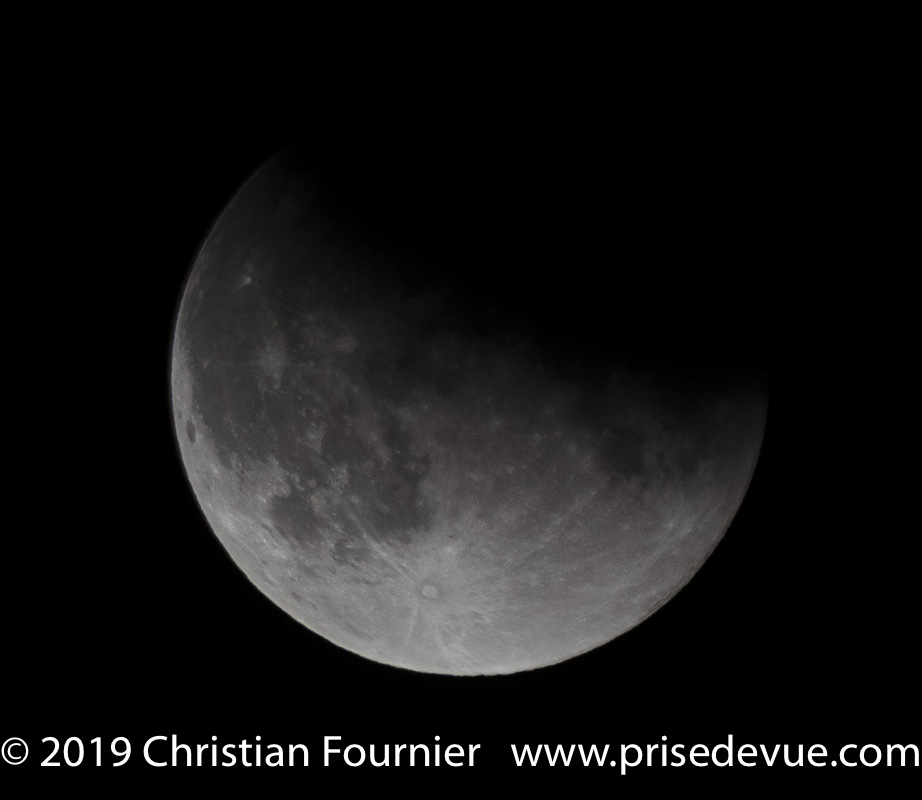




La soucoupe volante est un lampadaire éteint

Hello Christian!
Those are gorgeous pictures of the Moon, I love how you included the night version of the "UFO" and then the day version showing it is a lamp. That is wonderful!
I have stopped using Facebook, it was taking up too much of my time. I also think it is a little bit awful and actively screwed up the elections for the US helping put Trump in office. But it does have its good side, such as getting to see your pictures, and I really miss that. So I may start using it again, who knows? I am so happy you emailed me when you didn't see me on Facebook. Thank you for doing that!
I am involved with a very exciting project now which is taking up my time - NASA's TESS planet hunter space telescope. The observatory I work with got accepted into their "follow up" program which means I'm part of the group of astronomers who get to see the data first. The TESS cameras have huge pixels that can have more than one star in each pixel, so when an exoplanet crosses in front of its star (from our point of view), there is a small dip in the light. The TESS cameras will detect the small dimming which triggers an alert that there may be an exoplanet somewhere in the sky area covered by the huge pixel. We get a list of those coordinates in the sky and then it's our job to follow up using our ground based telescope to see which star is dimming in brightness. I hope I have explained it well, it is so exciting to be involved with this work! What could be more fun than finding planets outside our solar system?
This gives a good overview of what TESS does: https://www.nasa.gov/content/about-tess
The Transiting Exoplanet Survey Satellite (TESS) is the next step in the search for planets outside of our solar system, including those that could support life. The mission will find exoplanets that periodically block part of the light from their host stars, events called transits. TESS will survey 200,000 of the brightest stars near the sun to search for transiting exoplanets. TESS launched on April 18, 2018, aboard a SpaceX Falcon 9 rocket.
TESS scientists expect the mission will catalog thousands of planet candidates and vastly increase the current number of known exoplanets. Of these, approximately 300 are expected to be Earth-sized and super-Earth-sized exoplanets, which are worlds no larger than twice the size of Earth. TESS will find the most promising exoplanets orbiting our nearest and brightest stars, giving future researchers a rich set of new targets for more comprehensive follow-up studies.
And here is more about the Follow Up program if you want to see examples of the data. I know you would love the math. https://heasarc.gsfc.nasa.gov/docs/tess/followup.html
I hope you are doing well, it is always wonderful to hear from you.
Shannon

TESS = Transiting Exoplanet Survey Satellite
Le Transiting Exoplanet Survey Satellite (en français « Satellite de recensement des exoplanètes en transit »), plus connu par son acronyme TESS, est un petit télescope spatial consacré à la recherche d'exoplanètes lancé le 18 avril 2018. TESS a pour principal objectif de recenser de manière systématique les exoplanètes proches et de détecter plusieurs dizaines de planètes telluriques gravitant dans la zone habitable d'étoiles à la fois brillantes et proches.
Pour y parvenir, le télescope spatial, qui utilise la méthode de détection des transits, observera pratiquement tout le ciel en consacrant 27 jours à chaque secteur de la voute céleste. TESS observera des étoiles en moyenne 30 à 100 fois plus brillantes que celles étudiées par le télescope spatial Kepler, facilitant ainsi la détection de planètes de petite taille malgré le recours à des détecteurs beaucoup moins performants que ceux de Kepler. Les observations de TESS porteront en particulier sur des étoiles de type spectral G — catégorie à laquelle se rattache le Soleil — et K. Du fait de la durée des observations, les planètes détectées devraient avoir en moyenne une période orbitale d'une dizaine de jours. Les planètes détectées par TESS doivent être ensuite étudiées plus en détail par des instruments plus puissants comme le télescope spatial infrarouge James-Webb.
TESS est un engin spatial de petite taille (350 kilogrammes) qui emporte quatre caméras grand angle. Il circule sur une orbite terrestre haute de 13,7 jours, en résonance de moyen mouvement 2:1 avec la Lune, avec un apogée situé au-delà de l'orbite lunaire, choisie parce qu'elle permet de remplir les objectifs de la mission tout en restant dans l'enveloppe de coût du projet. Celui-ci a été sélectionné par la NASA en avril 2013 dans le cadre du programme Explorer de la NASA, dédié aux missions scientifiques à cout réduit (200 millions de dollars), et développé par le Massachusetts Institute of Technology. La mission primaire doit durer deux ans.
En février 2019, le satellite TESS, le tout nouveau chasseur d'exoplanètes de la Nasa, découvrait l'exoplanète GJ 357b. Cet astre orbite autour d'une étoile naine de type M d'environ 30% la taille et la masse du Soleil et 40% plus froide. Il est situé à 31 années-lumière de la Terre, dans la constellation de l'Hydre. En cherchant à confirmer l'existence de cette planète avec des observations au sol, les astrophysiciens ont déniché deux autres exoplanètes dans le même système.
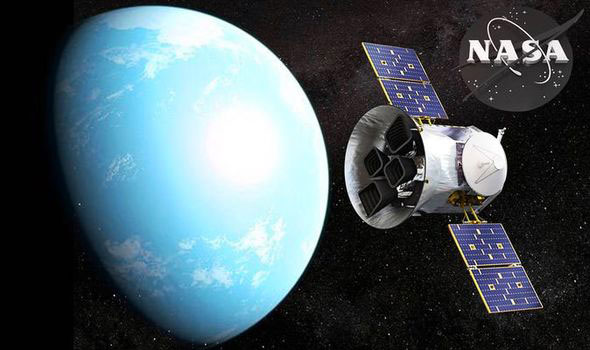
Le satellite TESS et une d'artiste de la planète GJ 357b.
The Transiting Exoplanet Survey Satellite (TESS) is a two-year survey that will discover exoplanets in orbit around bright stars.




|
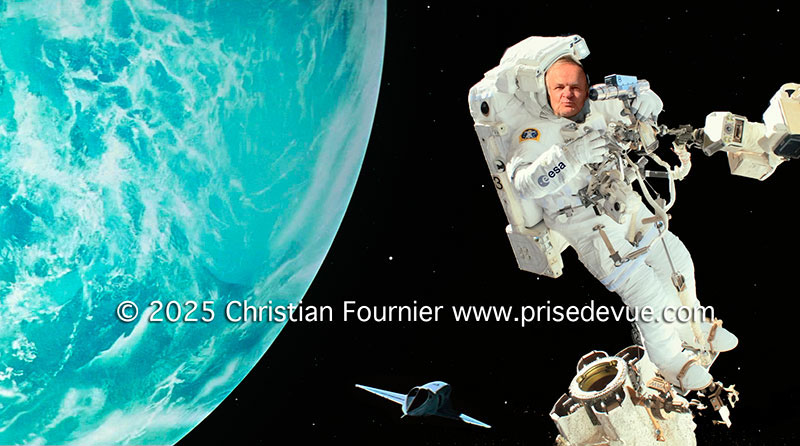
Space Odyssey
2025: NASA promises 'definitive evidence' of alien life by 2025.
Space Odyssey 2025: NASA promises 'definitive evidence' of alien life by 2025.
Left to right: Kepler 452b2015, space cowboy Chris Fournier, the CFSS (Chris
Fournier Space Station).
Photographed with an iPhone 36.
|
 |
The sky is the limit
|


Je n'a pas pu assister au décollage de la fusée Atlas V 401, en route vers Elysium Planitiala sur la planète Mars, en Californie en mai 2018.
My name is engraved on an electronic chip filed on Mars by Insight!
Thanks to Shannon Templeton for that.
InSight (acronyme de l'anglais Interior Exploration using Seismic Investigations, Geodesy and Heat Transport ; en français : Exploration interne par les sondages sismiques, la géodésie et les flux thermiques) est une mission d'exploration de la planète Mars développée par l'agence spatiale américaine, la NASA qui a décollé le 5 mai 2018 et a atterri à la surface de la planète le 26 novembre 2018.
C'est la première mission entièrement consacrée à l'étude de la structure interne de cette planète. Pour y parvenir, elle emporte deux instruments scientifiques : le sismomètre SEIS et HP3, instrument de mesure des flux de chaleur en provenance du cœur de la planète. L'objectif scientifique principal de la mission est de disposer d'une meilleure connaissance de la structure interne de la planète, dont les caractéristiques sont mal connues, dans le but de reconstituer l'histoire de Mars. Les données collectées permettront également d'améliorer les modèles de formation et d'évolution des planètes rocheuses du système solaire — Mercure, Vénus, la Terre, Mars — ainsi que de la Lune.
Lorsque la mission InSight est sélectionnée en 2012, dans le cadre du programme Discovery de la NASA, elle constitue l'aboutissement de plusieurs projets proposés sans succès au cours des deux décennies qui ont précédé. Le programme Discovery regroupe des projets spatiaux américains caractérisés par un coût modéré et un cycle de développement court. Pour rentrer dans cette contrainte budgétaire, la mission repose sur l'envoi d'une station au sol unique contrairement aux projets qui l'avaient précédé. La sonde spatiale réutilise l'architecture de la mission Phoenix, qui s'était posée en 2007 dans la région polaire de Mars. C'est un engin de relativement petite taille (moins de 700 kilogrammes, au lancement). La charge utile est fournie par des partenaires européens. L'instrument principal, le sismomètre SEIS est conçu par l'Institut de physique du globe de Paris et fourni sous maitrise d’œuvre de l'agence spatiale française (CNES), tandis que HP3 est développé par l'Allemagne.
Un problème de mise au point sur l'instrument SEIS repousse le lancement de la mission, prévu initialement en 2016, à la fenêtre de lancement suivante vers Mars en 2018. Insight se pose à la surface de Mars le 26 novembre 2018 dans une région de plaine baptisée Elysium Planitia, située près de l'équateur de cette planète. La phase d'étude scientifique doit durer deux années terrestres.

This is NASA InSight's first full selfie on Mars. It displays the lander's solar panels and deck. On top of the deck are its science instruments, weather sensor booms and UHF antenna. The selfie was taken on Dec. 6, 2018 (Sol 10).
The selfie is made up of 11 images which were taken by its Instrument Deployment Camera, located on the elbow of its robotic arm. Those images are then stitched together into a mosaic.
JPL manages InSight for NASA's Science Mission Directorate. InSight is part of NASA's Discovery Program, managed by the agency's Marshall Space Flight Center in Huntsville, Alabama. Lockheed Martin Space in Denver built the InSight spacecraft, including its cruise stage and lander, and supports spacecraft operations for the mission.
A number of European partners, including France's Centre National d'Études Spatiales (CNES) and the German Aerospace Center (DLR), are supporting the InSight mission. CNES and the Institut de Physique du Globe de Paris (IPGP) provided the Seismic Experiment for Interior Structure (SEIS) instrument, with significant contributions from the Max Planck Institute for Solar System Research (MPS) in Germany, the Swiss Institute of Technology (ETH) in Switzerland, Imperial College and Oxford University in the United Kingdom, and JPL. DLR provided the Heat Flow and Physical Properties Package (HP3) instrument, with significant contributions from the Space Research Center (CBK) of the Polish Academy of Sciences and Astronika in Poland. Spain's Centro de Astrobiología (CAB) supplied the wind sensors.

Une des puces d'InSight contenant les noms des personnes ayant participé à la campagne
dont Frédérique Gorsky et moi-même.

Voici où nos noms sont écrits, dans la petite capsule. Ils devraient y resté des millions d'années !

Insight à Elysium Planitia


An InSight-ful look at Mars’ core
Scientists have made the first direct observation of another planet's core using seismometer data collected by NASA InSight during two large marsquakes in 2021. The findings represent the best data yet on the size and composition on the inner workings of Mars, revealing that the planet's liquid iron core is smaller and denser than previously thought. Le 28 sept 2021



|

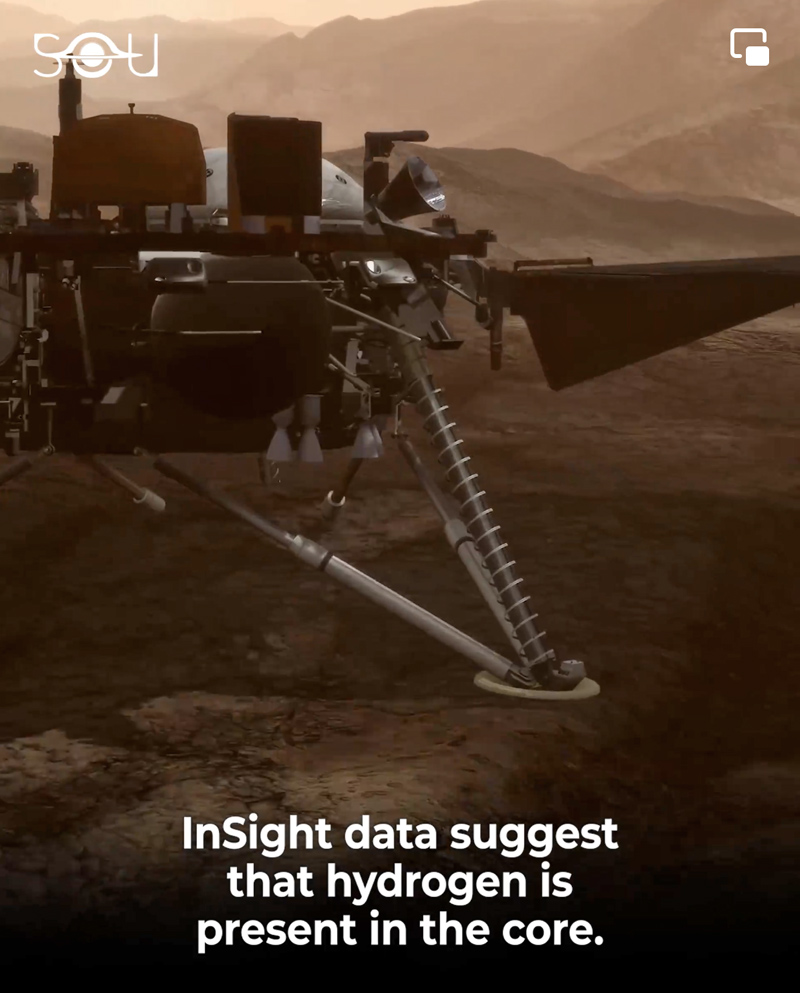




13 dec 2023 : Hello Christian!
I seem to recall you enjoyed sending your name to Mars on the NASA mission and now there is one going to Europa (a moon of Jupiter). It will also have a plaque with our names engraved on it. The Europa mission has changed numerous times over the past 7 or 8 years so I'm not exactly sure how they will end the mission but we might have a chance at having our names sailing across the universe forever! Well, maybe not forever, maybe just a really long time. I suspect it will orbit Europa for awhile and then dive into Jupiter at the end; they will not want it to touch Europa for fear of contamination.
I hope you are doing well! I often look at your personal picture album at the cruise parts and smile thinking of those times. Take care, Shannon
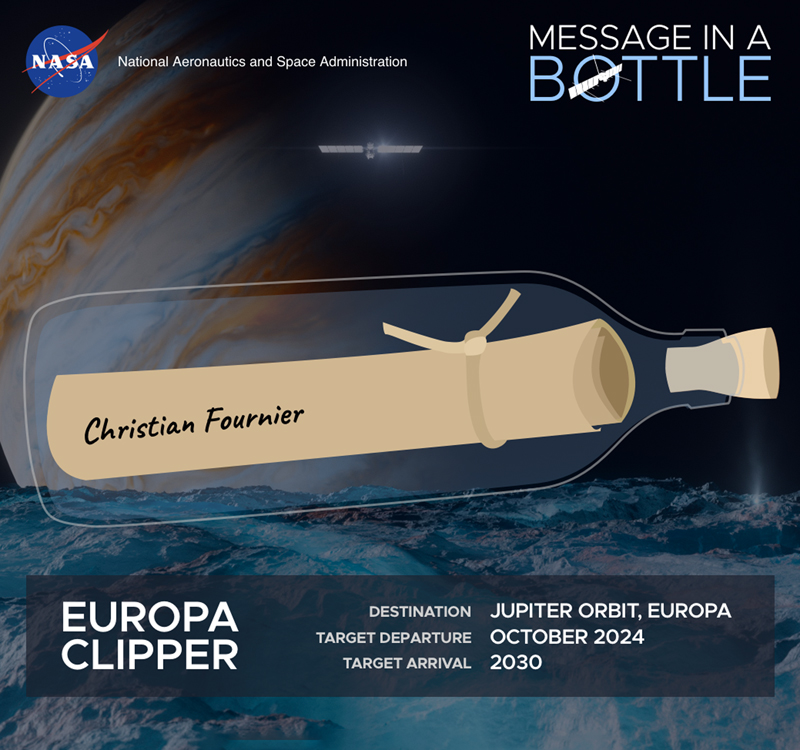

Mon nom sera écrit sur la planète Europe, satellite de Jupiter. Le satellite de Jupiter renfermerait un océan avec des éléments propices à la vie. Sujet suivi Le 22/09/2023 à 21h00. Une étude publiée jeudi 21 septembre 2023 indique que le télescope spatial James-Webb aurait observé que l'océan présent sur Europe, un satellite de Jupiter, contiendrait des éléments propices à la vie.
Europa Clipper’s main science goal is to determine whether there are places below the surface of Jupiter’s icy moon, Europa, that could support life.
The mission's three main science objectives are to understand the nature of the ice shell and the ocean beneath it, along with the moon’s composition and geology. The mission’s detailed exploration of Europa will help scientists better understand the astrobiological potential for habitable worlds beyond our planet.
Europa Clipper will orbit Jupiter, and make nearly 50 flybys of Europa at closest-approach altitudes as low as 16 miles (25 kilometers) above the surface, soaring over a different location during each flyby to scan nearly the entire moon.








 |
At the Paris Natural History Museum.
 |


 |
The Voyager Golden Records are two phonograph records that were included aboard both Voyager spacecraft launched in 1977. The records contain sounds and images selected to portray the diversity of life and culture on Earth, and are intended for any intelligent extraterrestrial life form, or for future humans, who may find them. Those records are considered as a sort of a time capsule.
Although neither Voyager spacecraft is heading toward any particular star, Voyager 1 will pass within 1.6 light-years distance of the star Gliese 445, currently in the constellation Camelopardalis, in about 40,000 years.
Carl Sagan noted that "The spacecraft will be encountered and the record played only if there are advanced space-faring civilizations in interstellar space, but the launching of this 'bottle' into the cosmic 'ocean' says something very hopeful about life on this planet."

NASA has tested Martian spacecraft on Death Valley National Park’s dry and dusty terrain. Here, Carl Sagan stands with a mockup of the Viking lander. The Viking missions explored Mars from 1976 to 1980. Each February, the park and NASA celebrate the park’s continuing contributions to space exploration by hosting a joint Dark Sky Festival. Credit: NASA/JPL
Yellowstone National Park is famous for its geysers - as is Saturn’s moon Enceladus! A team from NASA’s Goddard Space Flight Center visited the park in winter 2019 to see if they could detect microbial life within the geysers and the surrounding icy surface. The research has implications for a potential future mission to Enceladus. Credit: NASA/Dina Bower
Last summer, a multidisciplinary group of NASA researchers traveled to Hawai'i Volcanoes National Park to better understand how volcanoes impact a planet’s environment. Volcanoes are common throughout our solar system and beyond. The science team conducted this research with special permission from the National Park Service. Credit: NASA/Caela Barry
Craters of the Moon NPS is aptly named. In 1969, the Apollo 14 astronauts visited the park to practice conducting geology on the lunar surface. NASA researchers continue to visit this site today. Credit: NASA/Erika Rader


Le 10 décembre 2018
10 décembre 2012 : la sonde Voyager 2, lancée il y a 40 ans atteint l'espace interstellaire
Elle a parcouru 18 milliards de kilomètres mais reste techniquement dans le système solaire...
To infinity and beyond. A dix-huit milliards de kilomètres de la Terre, après 41 années de voyage dans le système solaire, la sonde Voyager 2 a atteint une zone où le vent solaire ne souffle plus, a annoncé la Nasa lundi 10 décembre 2018. A cette distance extraordinaire, chaque message de Voyager 2 met 16 heures et demi à atteindre la Terre. Par comparaison, le temps de communication à la vitesse de la lumière est de 8 minutes pour Mars actuellement.
Les scientifiques de la Nasa ont confirmé lundi que Voyager 2 était sortie de l’héliosphère, la bulle protectrice de particules et de champs magnétiques créés par le Soleil. L’appareil a traversé l’héliopause, limite au-delà de laquelle ce vent solaire n’atteint plus les objets.
Mais la sonde reste techniquement dans le système solaire, dont la frontière est fixée aux confins du nuage d’Oort, bien au-delà de Pluton, et que la Nasa compare à « une grosse bulle épaisse autour du système solaire ». Ce nuage, composé probablement de milliards de corps glacés, reste sous l’influence de la gravité du Soleil. Voyager 2 mettra encore 30.000 ans à traverser cette ceinture. Si elle voulait atteindre Proxima du Centaura, notre étoile voisine, elle mettrait 70.000 ans.
En 2012, Voyager 2 est devenue la plus longue et la plus mythique mission de la Nasa. Ses instruments continuent d’envoyer des observations. Lancée alors que Jimmy Carter était président des Etats-Unis, elle a survolé Jupiter en 1979, puis Saturne, Uranus et Neptune, en 1989. Comme elle fonctionnait encore après avoir dépassé Neptune, la Nasa a continué la mission. Les ingénieurs ont éteint ses caméras pour économiser son énergie.
Sa sonde jumelle, Voyager 1, qui a quitté la Terre seize jours après elle, a atteint l’espace interstellaire en 2012 et continue encore de fonctionner. Mais l’un de ses instruments cruciaux pour mesurer le vent solaire, baptisé Plasma Science Experiment, est tombé en panne en 1980.
« Cette fois, c’est encore mieux », a dit Nicky Fox, directeur de la division d’héliophysique de la Nasa. « Les informations envoyées par les Voyager sur les limites de l’influence du Soleil nous donnent un aperçu inédit d’un territoire vraiment vierge ».
Les deux sondes vont « très bien, pour des seniors », a dit Suzanne Dodd, directrice des communications interplanétaires de la Nasa. Selon elle, elles pourraient encore durer cinq ou dix ans, la seule limite étant la perte progressive de capacité de leur générateur à radioisotopes, qui fournit de l’énergie par la désintégration de matériaux radioactifs. Les sondes emportent chacune des enregistrements de sons et d’images de la Terre sur des plaques en or et en cuivre.
Même éteints, les engins continueront de voyager potentiellement des milliards d’années avec leurs disques, et « ces capsules temporelles pourraient un jour être les seules traces de la civilisation humaine », dit la Nasa sobrement dans son communiqué.
|

The sad truth is that you learn more about ASTRONOMY through the internet or self-study than you do at school.
|
 |

Helping the Hubble Space Telesope.
|
| Next time, I will take my car, a Tesla. La prochaine fois je prendrai ma voiture, une Tesla.
« My continued efforts to bring the universe down to Earth. » (from « The Sky Is Not the Limit: Adventures of an Urban Astrophysicist » by Neil Degrasse Tyson)
"Mes constants efforts pour amener l'univers à la terre." (de « The Sky Is Not the Limit: Adventures of an Urban Astrophysicist » par Neil Degrasse Tyson)
NASA's Hubble Space Telescope has been circling Earth for 25 years, but the iconic observatory won't last forever.
Hubble launched aboard the space shuttle Discovery on April 24, 1990, and has been capturing stunning views of the cosmos since astronauts fixed a flaw in the telescope's mirror during a 1993 servicing mission. The famous telescope has contributed to a number of revolutionary discoveries, including confirming that the universe's expansion is accelerating rather than slowing down and finding that supermassive black holes lurk at the heart of most, if not all galaxies.
Hubble's scientific legacy should continue to grow for years to come. The telescope's operators express confidence that the device will keep operating through at least 2020, and possibly even farther into the future, thanks in large part to the success of the five servicing missions astronauts performed between 1993 and 2009.
Le télescope spatial Hubble (en anglais Hubble Space Telescope, en abrégé HST) est un télescope spatial développé par la NASA avec une participation de l'Agence spatiale européenne, opérationnel depuis 1990. Son miroir de grande taille (2,4 mètres de diamètre), qui lui permet de restituer des images avec une résolution angulaire inférieure à 0,1 seconde d'arc ainsi que sa capacité à observer à l'aide d'imageurs et de spectroscopes dans l'infrarouge proche et l'ultraviolet, lui permettent de surclasser, pour de nombreux types d'observation, les instruments au sol les plus puissants, handicapés par la présence de l'atmosphère terrestre. Les données collectées par Hubble ont contribué à des découvertes de grande portée dans le domaine de l'astrophysique, telles que la mesure du taux d'expansion de l'Univers, la confirmation de la présence de trous noirs supermassifs au centre des galaxies ou l'existence de la matière noire et de l'énergie noire.
Quatre autres missions, en 1997, 1999, 2002 et 2009, permettent de moderniser les cinq instruments scientifiques et remplacer certains équipements défaillants ou devenus obsolètes. La dernière mission de maintenance, réalisée en 2009, immédiatement avant le retrait définitif des navettes spatiales, doit permettre au télescope Hubble de fonctionner jusqu'à la fin de la décennie 2010, sauf imprévu. Pour les observations dans l'infrarouge il doit être remplacé en 2019 par le télescope spatial James-Webb, aux capacités supérieures.
The Perseverance rover safely touched down on the Martian surface, inside Jezero Crater, on Feb. 18, 2021.
Les « sept minutes de terreur » pour Perseverance et son atterrissage sur Mars !

The Dragon Space X launch towards ISS on 23rd April 2021
|
|

 |

L'éclipse solaire partielle, à travers les nuages, du haut de la tour Montparnasse à Paris le 25 oct 2022 avec Joris Bossard
Le limbe ( Bord du disque d'un astre) du Soleil a été temporairement caché par la Lune.
Il s’agissait d’une éclipse sans ombre : personne n’a pu, sur la planète, voir le Soleil complètement occulté par la Lune. Ce qui n’empêchait pas le spectacle d’être grandiose,
à condition de regarder l’éclipse en prenant garde à sa sécurité.



Lunettes de soleil et casquette à large visière
sont un must.






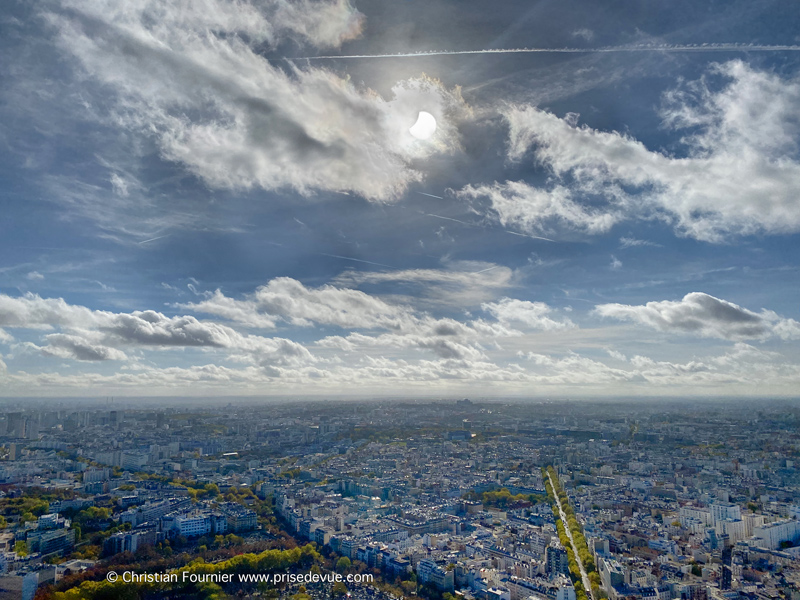



ECLIPSE PARTIELLE DE SOLEIL LE 29 MARS 2025� PARIS, square de Port Royal. 12H02. 23.5 %

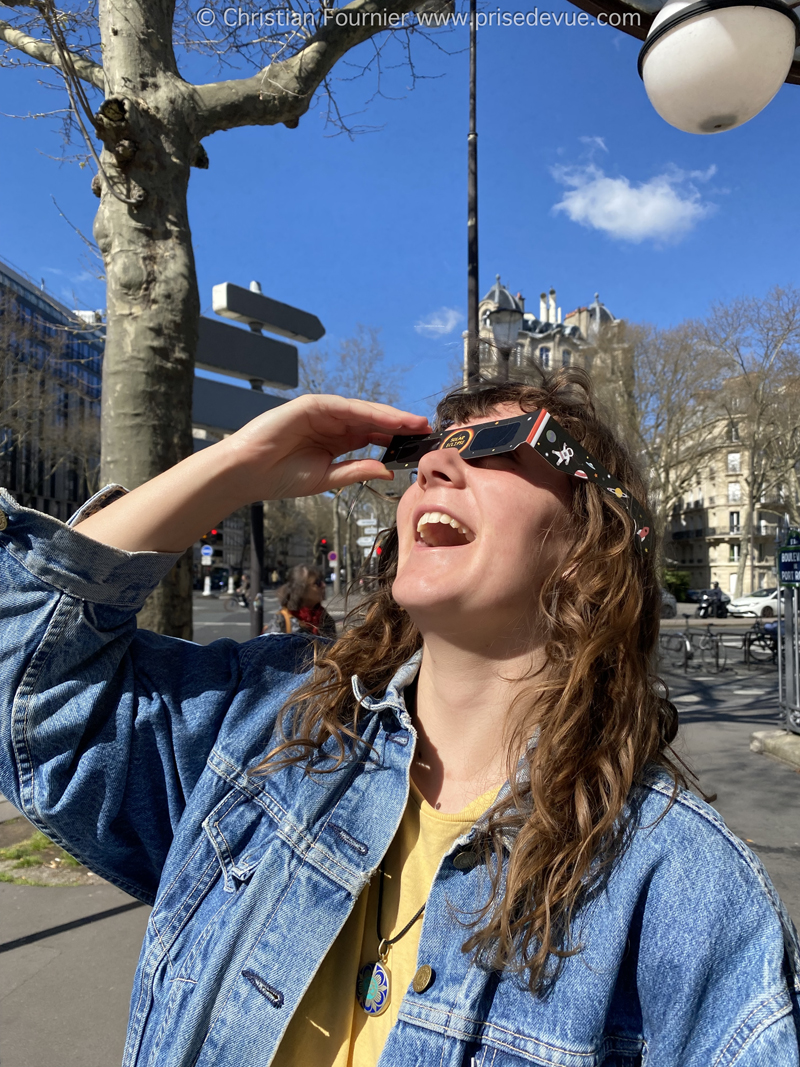
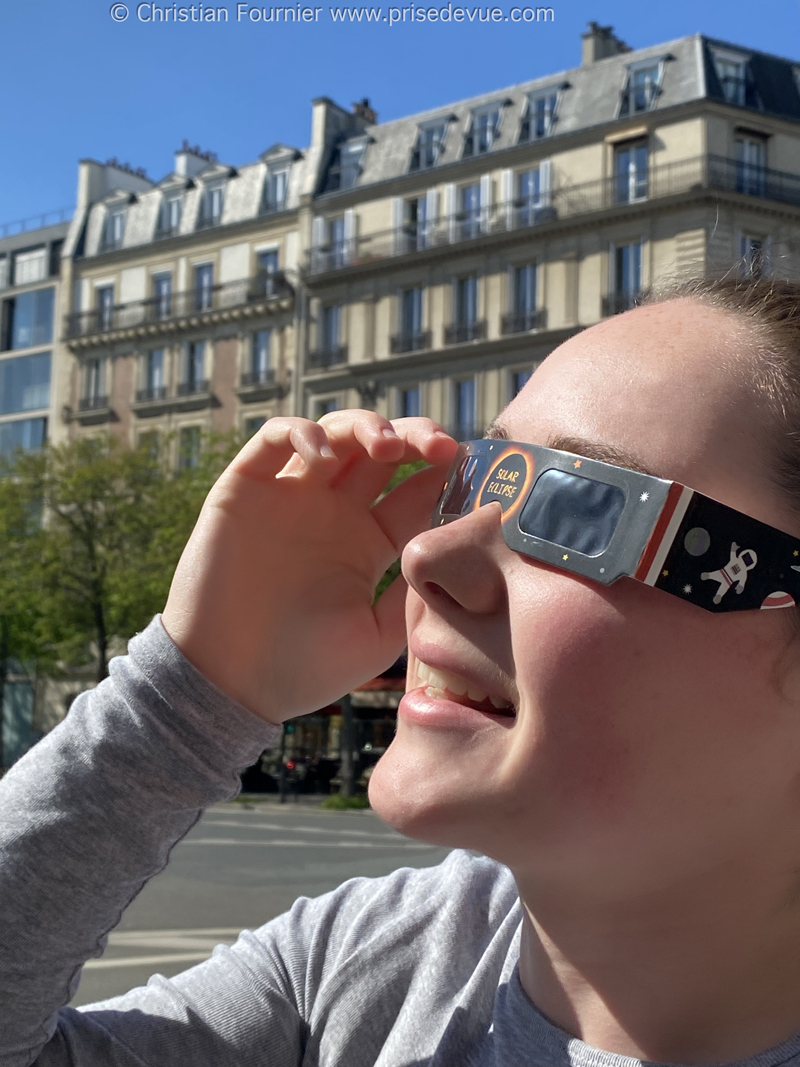

 |

In this Feb. 7, 1984 photograph taken by his fellow crewmembers aboard the Earth-orbiting Space Shuttle Challenger on the STS-41B mission, NASA astronaut Bruce McCandless II approaches his maximum distance from the vehicle. McCandless became the first astronaut to maneuver about in space untethered, during this first "field" tryout of a nitrogen-propelled, hand-controlled backpack device called the Manned Maneuvering Unit.

Vu au Salon Photo au Grand Palais le 8 nov 2024




***************************************************


|
Culturespaces s’associe au Centre National d’Études Spatiales (CNES) pour présenter lors de soirées exceptionnelles DESTINATION COSMOS, une création originale pour l’Atelier des Lumières.
Des premiers peuples à avoir observé les étoiles en passant par l’alunissage d’Apollo 11, l’envie de découverte spatiale de l’humanité ne cesse de croître.
Cette exposition vous plonge dans un dédale d’étoiles, de planètes, nébuleuses et supernova. Un voyage unique qui débute au coeur de la forêt tropicale guyanaise et prend fin aux confins de l’univers. Après avoir quitté la terre, vous êtes invités à sillonner les canyons martiens aux côtés des rovers (véhicule conçu pour explorer la surface d’un corps céleste), plonger au coeur de Jupiter, survoler les anneaux de Saturne puis dépasser les frontières de notre système solaire afin d’explorer l’immensité de notre univers.
Totalement immergé dans l’image et la musique, laissez-vous emporter dans une aventure spatiale inédite !
Conception et animation : Spectre Lab




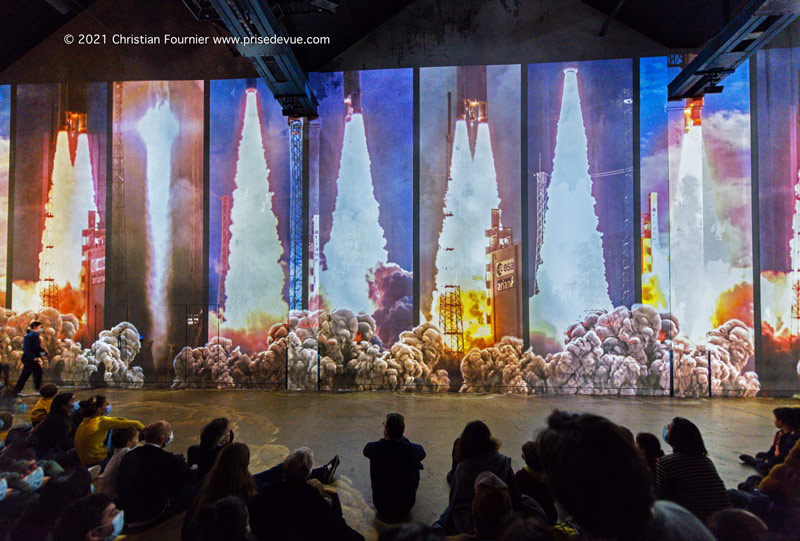




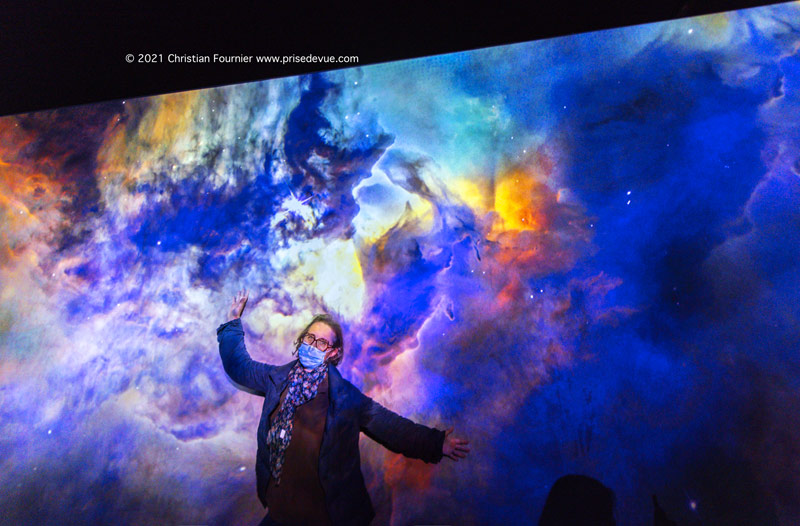


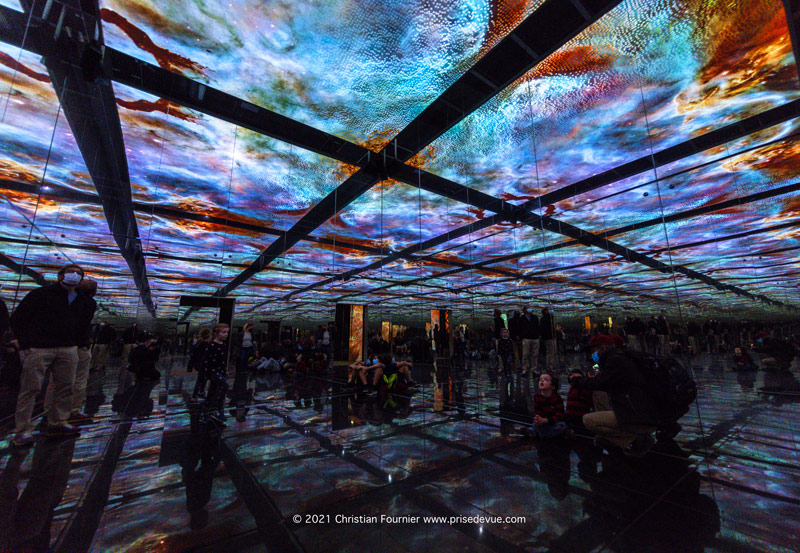



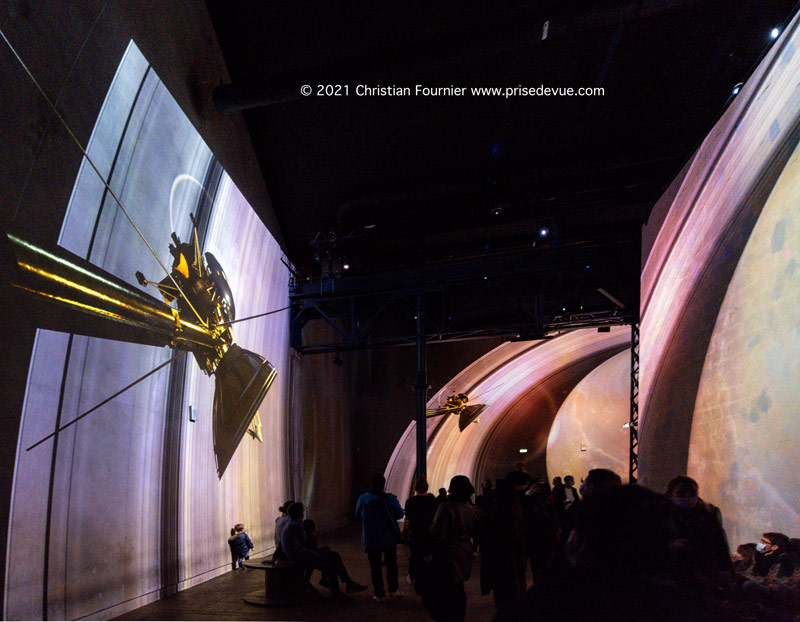
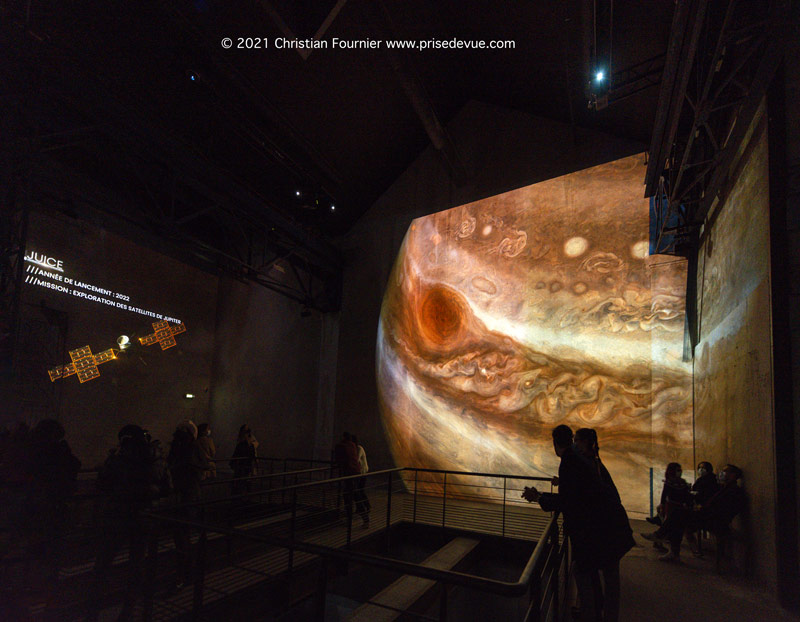










Faits scientifiques incroyables : comme le James Web Space Telescope voit dans le passé, il a vu son propre lancement !
Amazing Science Facts: Since the James Web Space Telescope sees in the past, it saw its own launch!
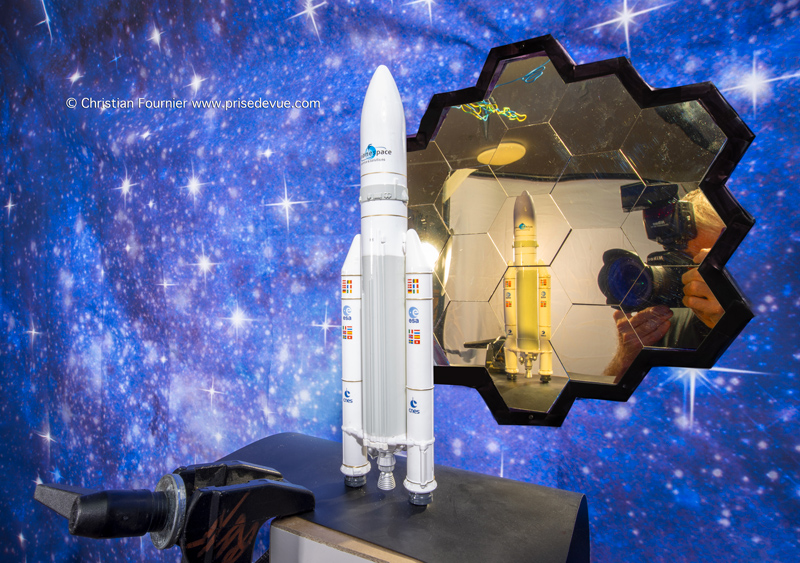

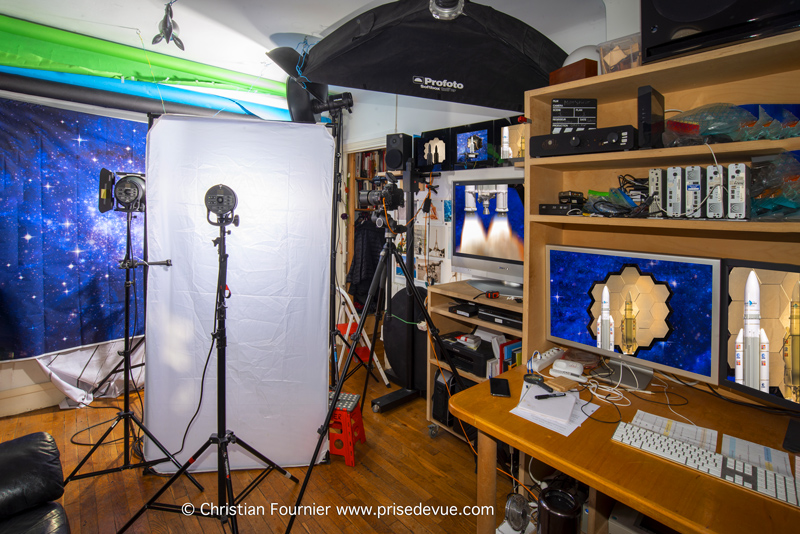

Le James Web Space Telescope s'est tourné vers la terre. La résolution est incroyable, mais les miroirs ne sont pas encore ajustés.
The James Web Space Telescope turned towards the earth. The resolution is incredible, but the mirrors are not adjusted yet.



 |
Au printemps 2013, je photographie pour son client Ireland des robinets cryogèniques
pour fluides à très basses températures et très hautes pressions, destinée entre autres aux fusées Ariane.
On peut les voir au musée aéronautique et spatial Safran
In the spring of 2013, I photographed for his client Ireland cryogenic valves
for fluids at very low temperature and very high pressures, intended for Ariane rockets.
They can be seen at the Safran Aeronautical and Space
Museum.
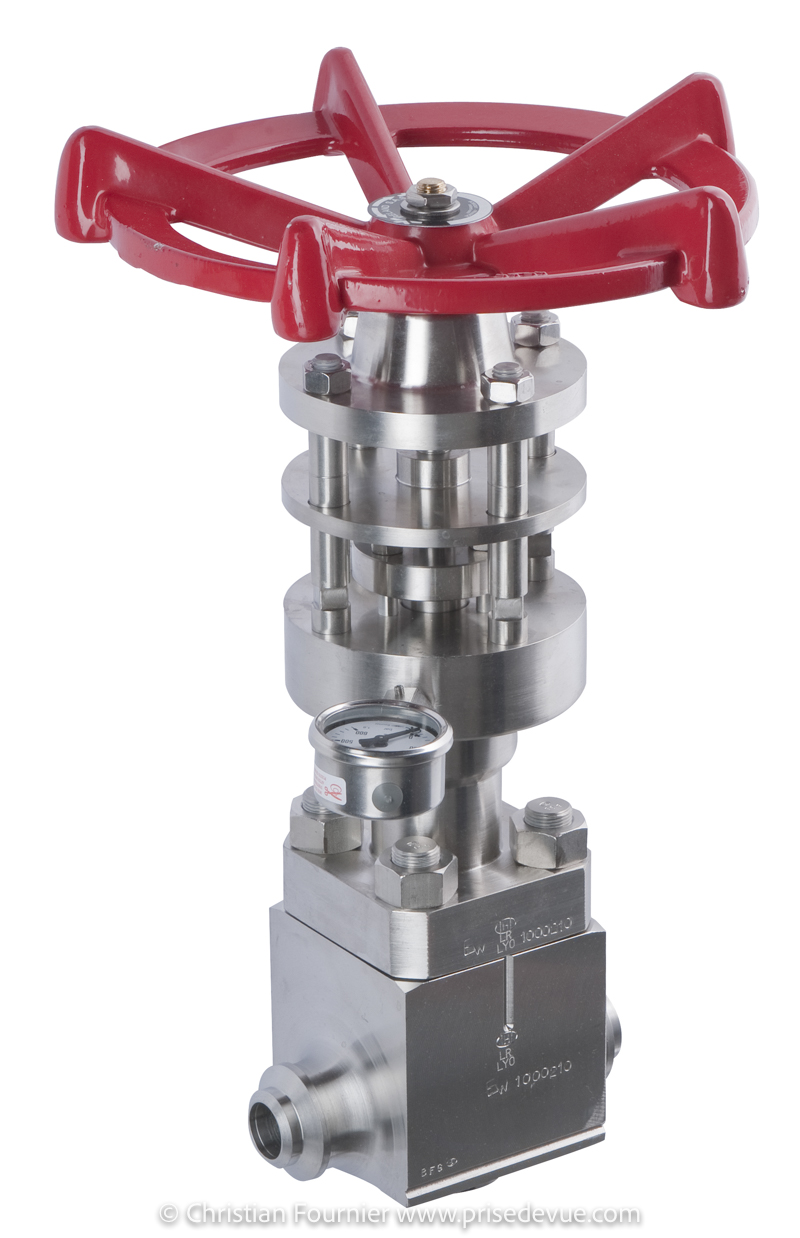




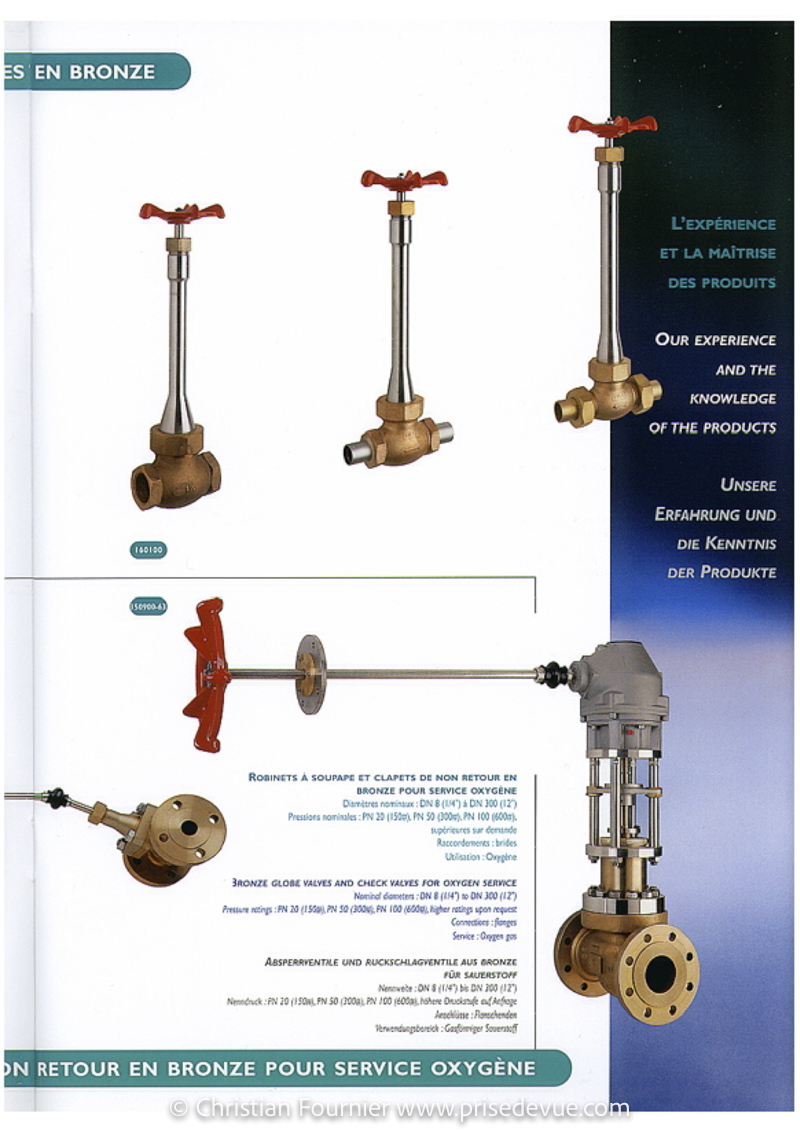
Une partie de la fusée Arianne, vue au Musée Aéronautique Safran en septembre 2018


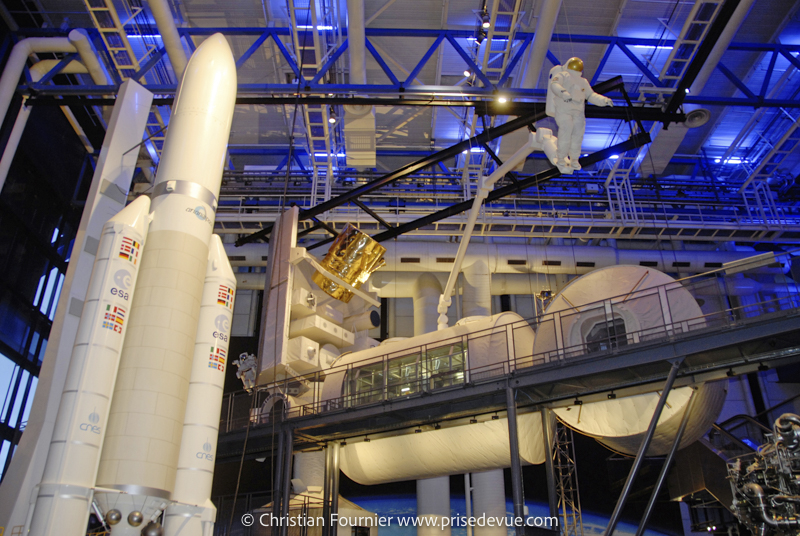


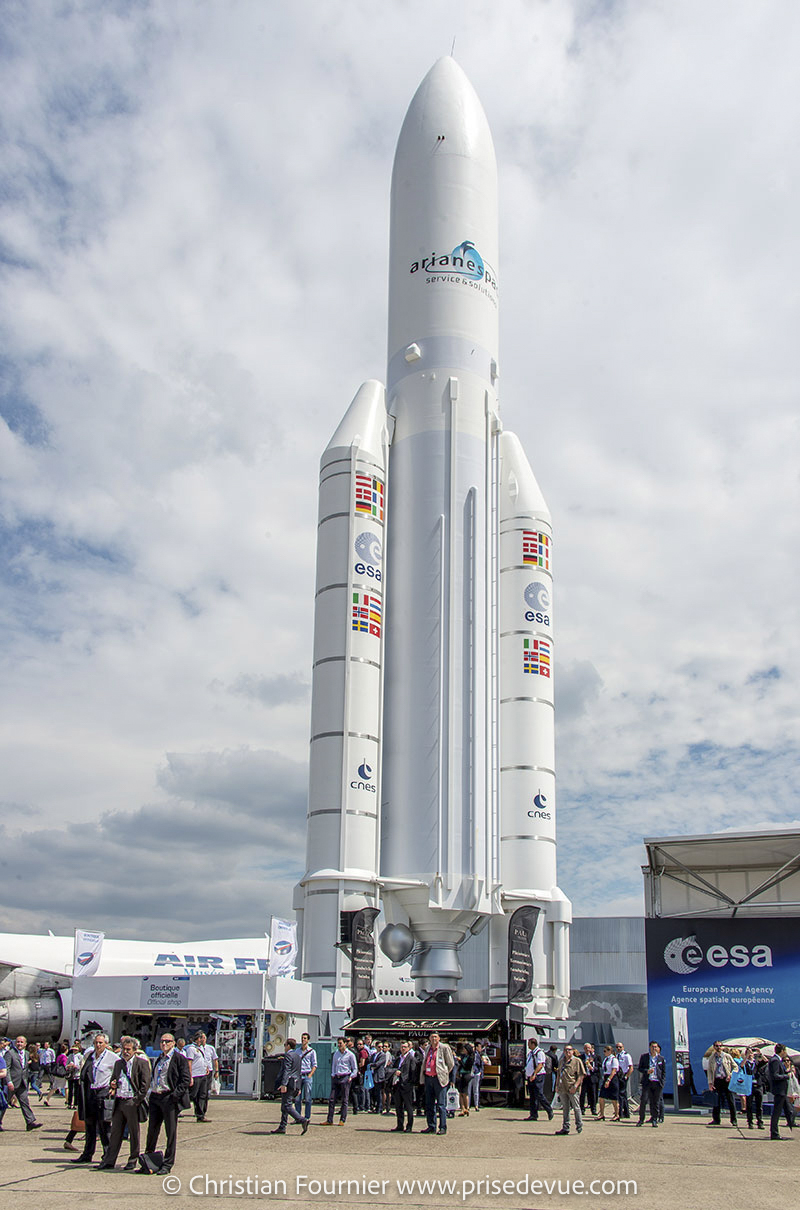






|
Le 9 février 2022 : Une expérience unique, insolite et sensationnelle du décollage d’une fusée Ariane, c’est maintenant possible à La Samaritaine. Le grand magasin du groupe LVMH propose à ses visiteurs une simulation gratuite exceptionnelle : vivre pendant trois minutes le décollage de la fusée Ariane. 5.3,2,1 paré au décollage… Dans le lancement d'une fusée, le plus impressionnant, c'est le son. Lorsqu'une fusée débute son voyage, le son devient de plus en plus intense puis cesse d’un seul coup lorsque qu'elle entre dans l’atmosphère. Le décollage d'une fusée constitue en effet le son le plus puissant émis par l'homme. C'est ce qui a conduit la prestigieuse marque d'enceintes Devialet, disponible à La Samaritaine, à imaginer un projet fou en collaboration avec les développeurs de la fusée Ariane : l’expérience Sound journey to space.



 |
Le 19 mars 2022 : l’Observatoire de l’Espace du CNES vous invite à découvrir une exposition d’art contemporain qui renverse notre rapport à l’Espace.
L’Observatoire de l’Espace du CNES ouvrira exceptionnellement ses portes au public pour présenter Avec l’Espace, une exposition consacrée aux relations entre arts visuels et Espace. Cette proposition d'art contemporain, qui ne se place ni dans la lignée de la figuration, ni dans celle du conceptuel, met en exergue de nouvelles formes de récits artistiques alors que l’aventure spatiale est plus que jamais sur le devant de la scène avec le « New Space ».
Super visite de l'ISS en suivant les vagbondages d'un montage papier. Merci Thomas Pesquet.



Thomas Pesquet
Thomas Pesquet (French pronunciation: [tɔma gotje pɛskɛ]; born 27 February 1978 in Rouen) is a French aerospace engineer, pilot, and European Space Agency astronaut. Pesquet was selected by ESA as a candidate in May 2009, and he successfully completed his basic training in November 2010. From November 2016 to June 2017, Pesquet was part of Expedition 50 and Expedition 51 as a flight engineer. Pesquet returned to space in April 2021 on board the SpaceX Crew Dragon for a second six-month stay on the ISS.

Thomas, je t'emmène pour ma prochaine mission sur la lune.


Sanan Bghdadi : Le ciel de nuit ne ressemble jamais à ça comme il apparaît sur les photos qui remplissent les médias du désert blanc, du mont Sainte Catherine ou du désert Atcama du Chili, ou comme certains montrent que c'est ce qui arrive lors d'une panne d'électricité dans une ville, ces photos ont été prises avec des techniques d'exposition longues, cela veut dire qu'il a été capturé 300-600 fois plus que ce que vos yeux peuvent voir. Ce que vous pouvez voir dans une zone reculée est deux fois plus que vous pouvez voir depuis les étoiles de la ville avec une bande de fumée très légère, rien de plus.
Mini road trip in Burgandy from 6th to 13th July 2022

A too large moon generated too much light pollution.




Le Parc naturel régional du Morvan, en Bourgogne, est, en astronomie,
l'une des rares zones sombres de la moitié nord de la France
My 17 Y.O. car still goes cross country

Bon, il suffit de se lever à 4H du matin et shooter dans le jardin.
Il faut un pied, 100 ISO, 15s d'exposition, F2.8 et un bon capteur.
A too large moon generated too much light pollution.


Dans le Cantal en juillet 2024

10 secondes de pause, 1000 ISO, diaphragme ouvert au maximum.

Je flashe un peu, pour éclairer la végétation et ma tête.
If the universe were infinite, we should see only stars in the sky.
 |

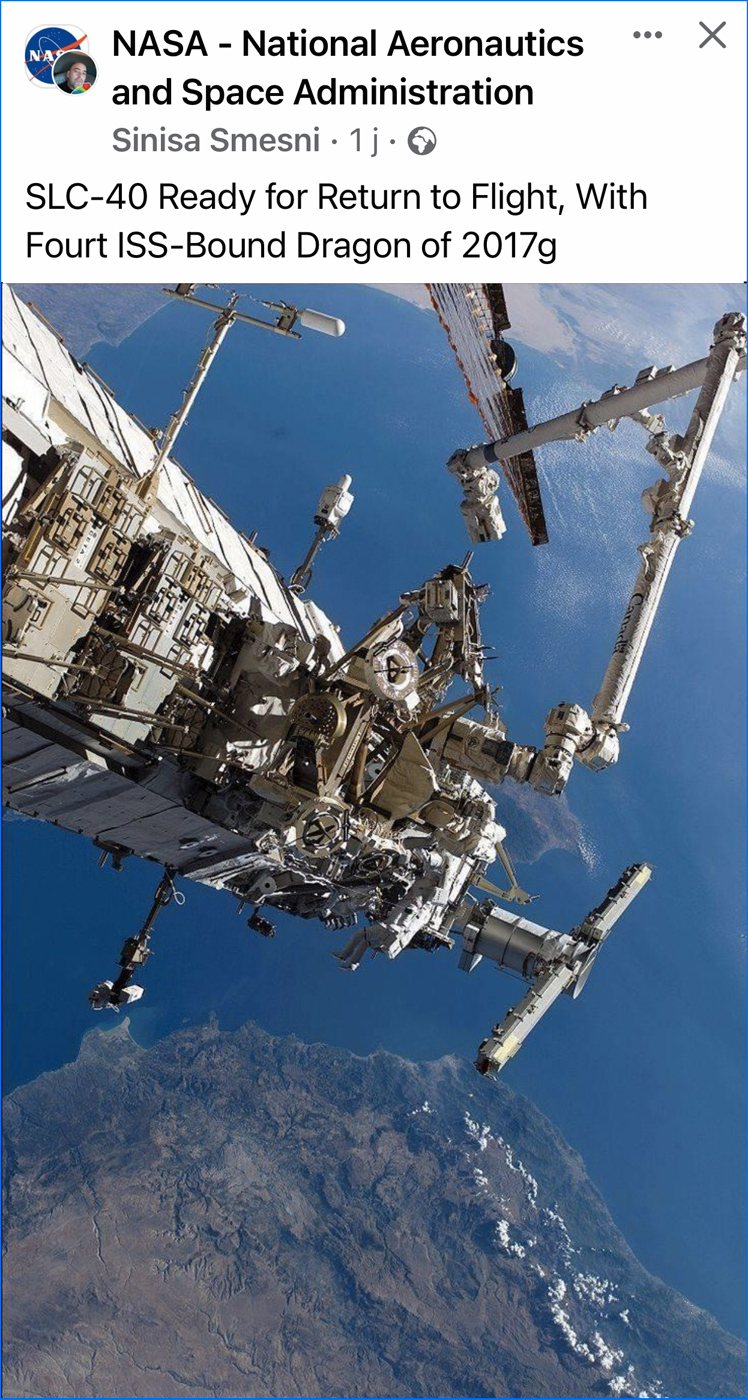






Astonaut Christina H






La signature d'un mystérieux contrat Safran / Rafael (Israël) lors du salon Eurosatory 2022




|





































































































































































































































































































































































































































